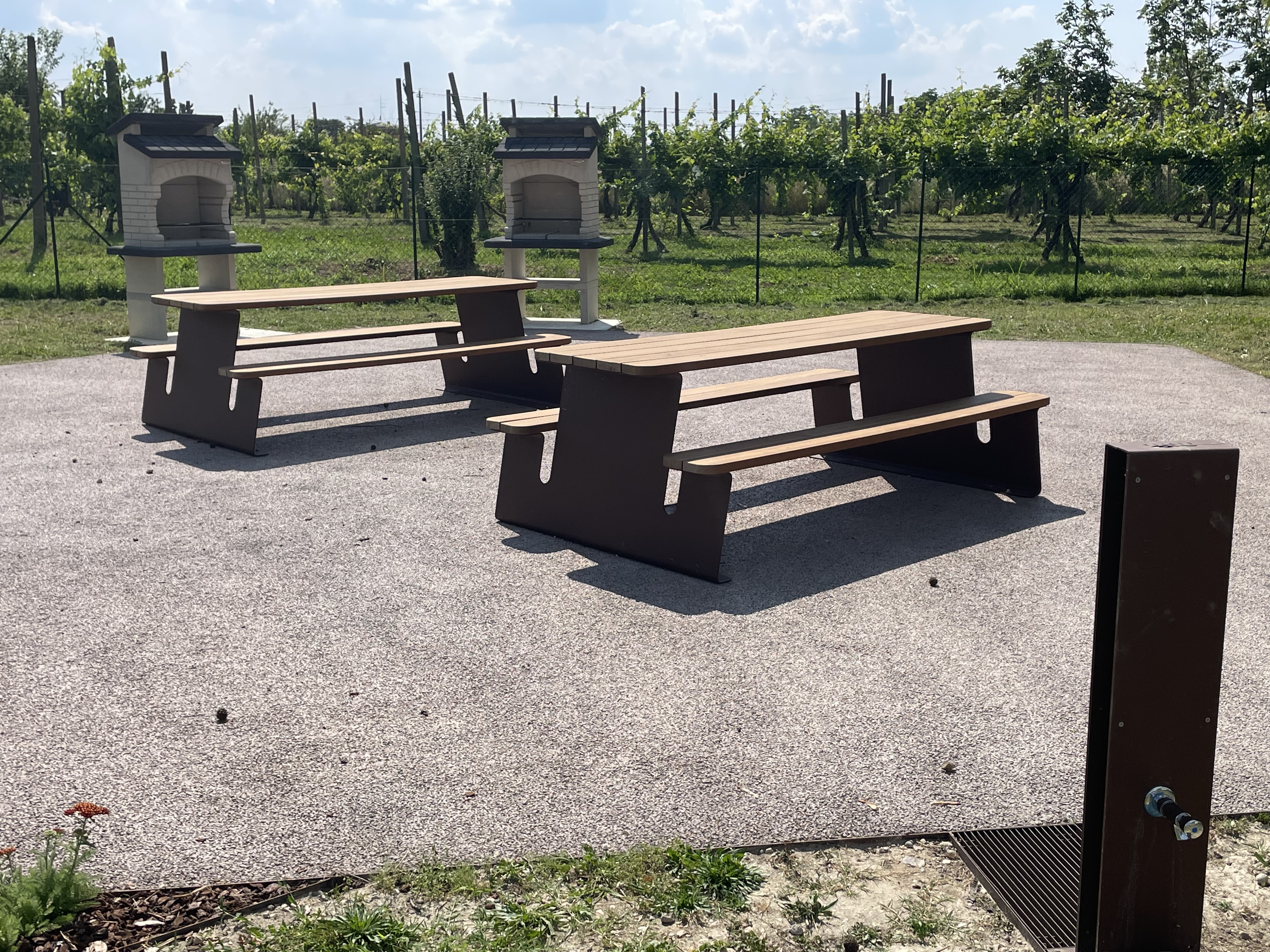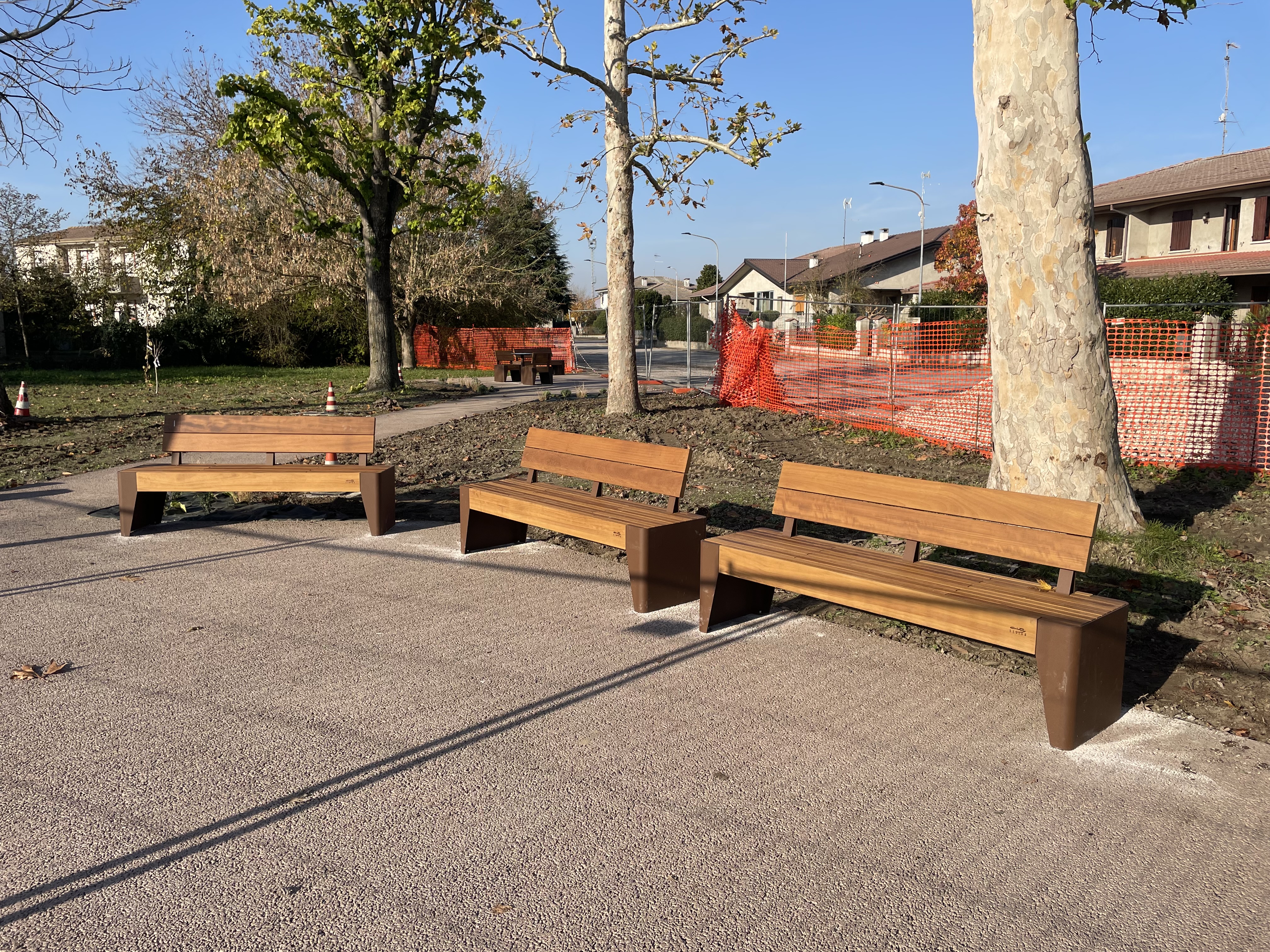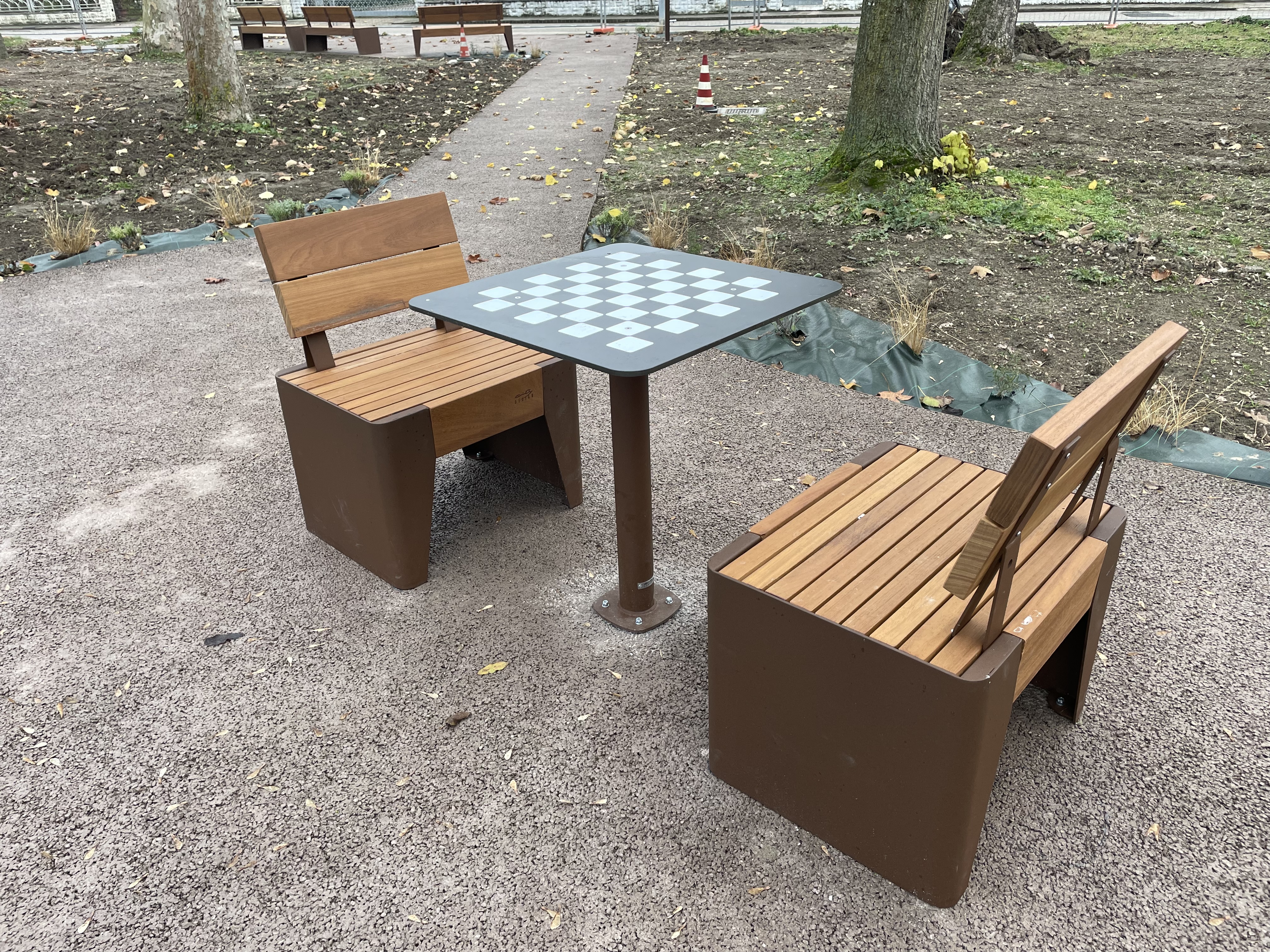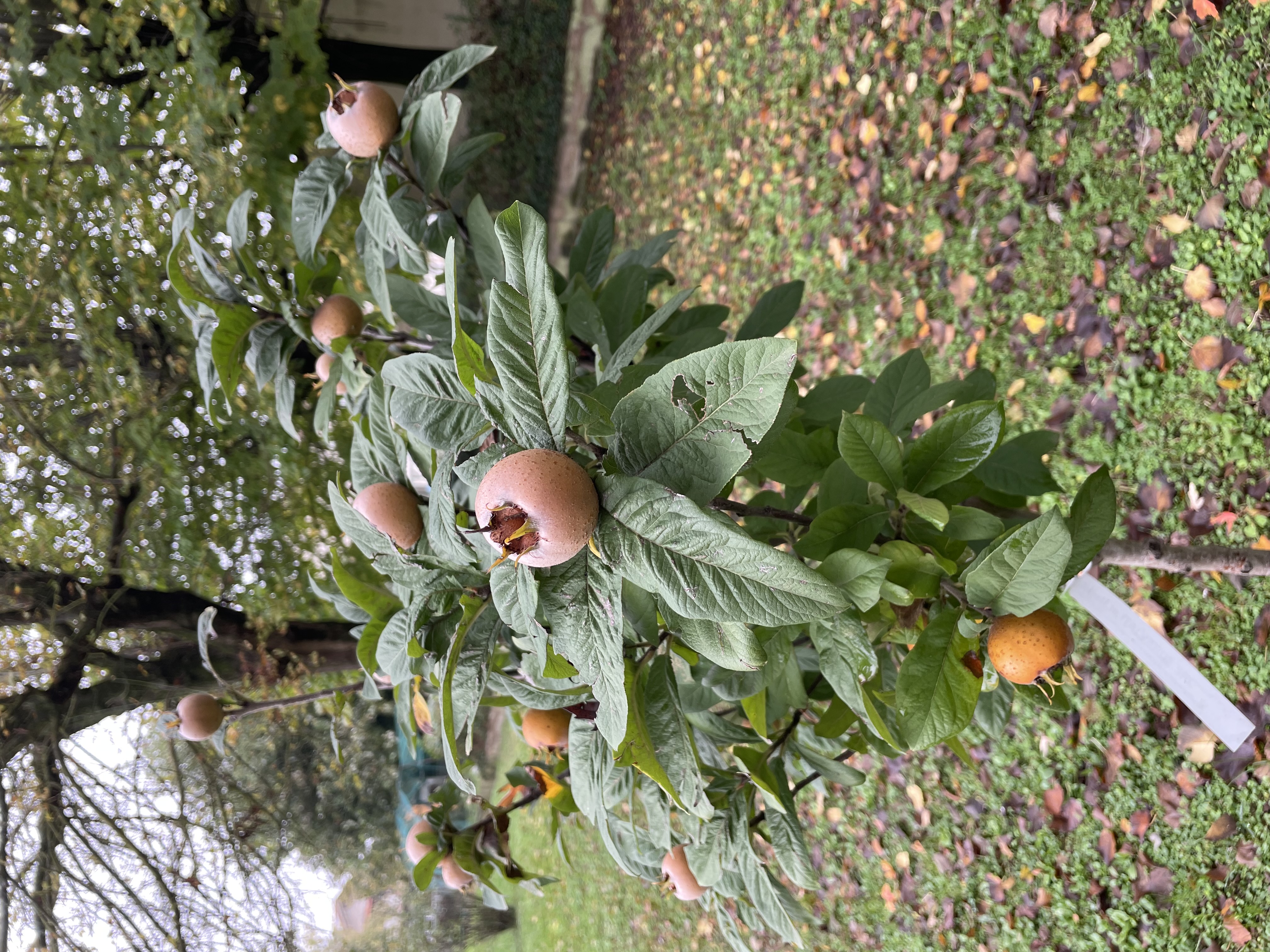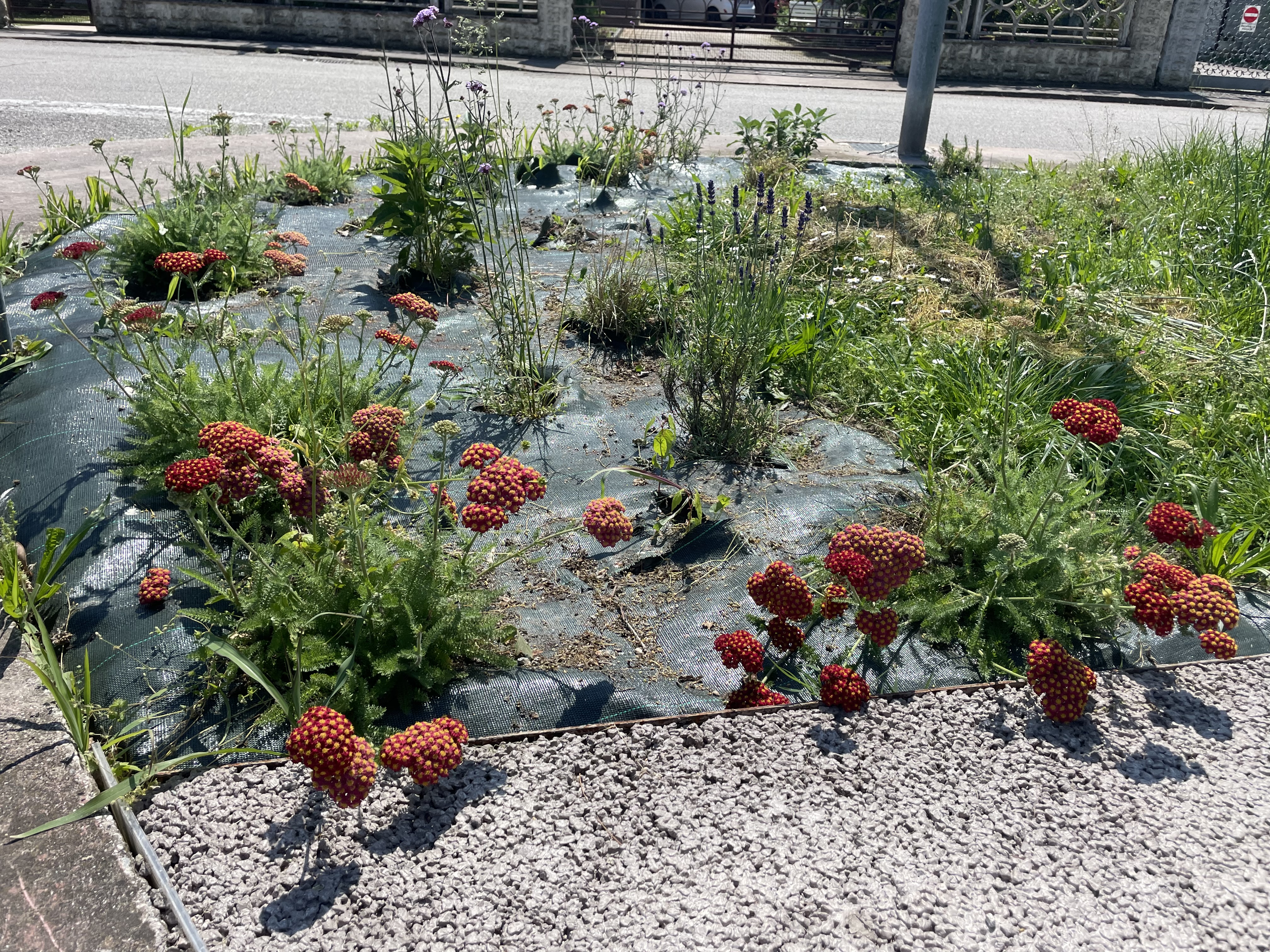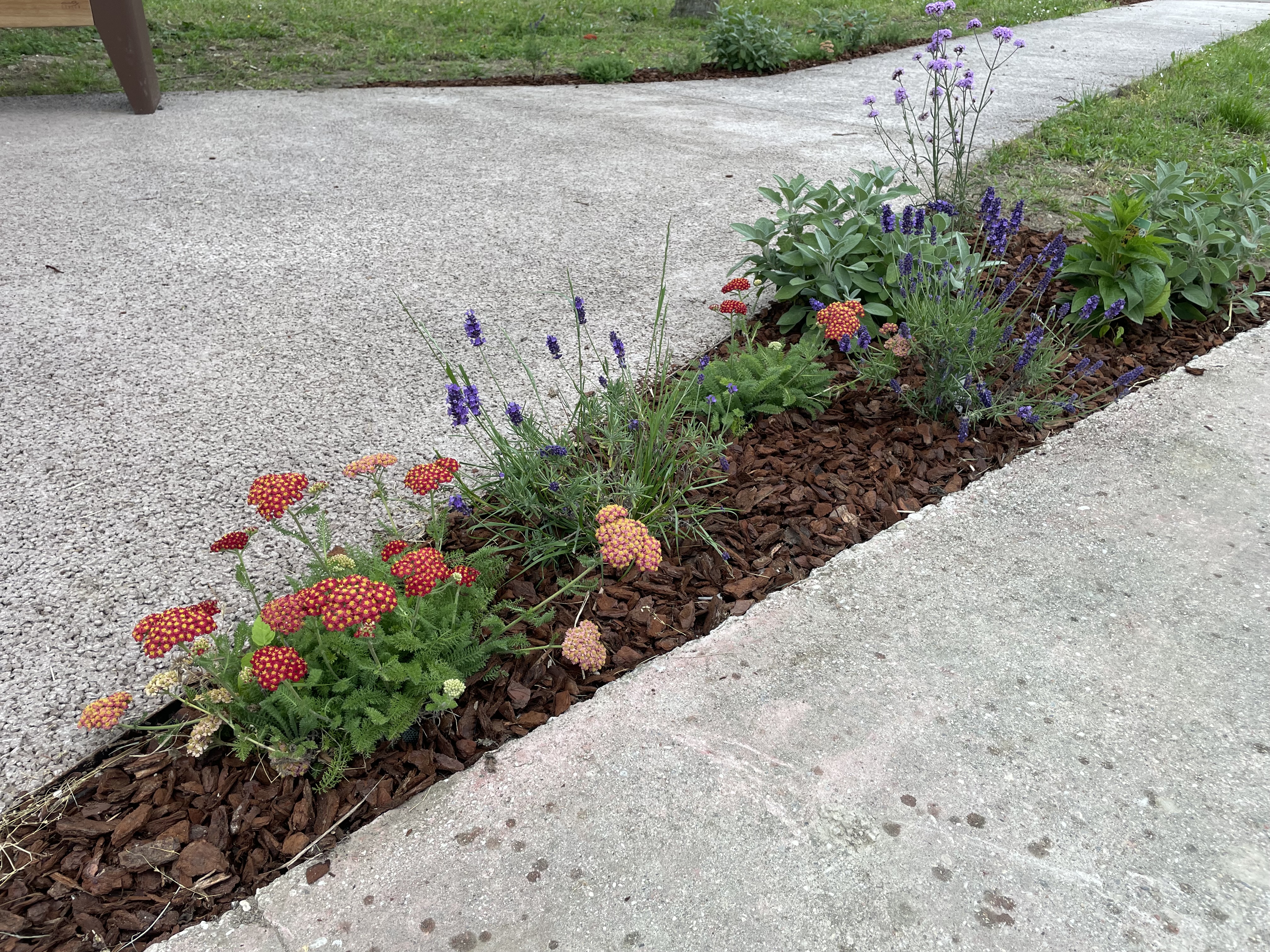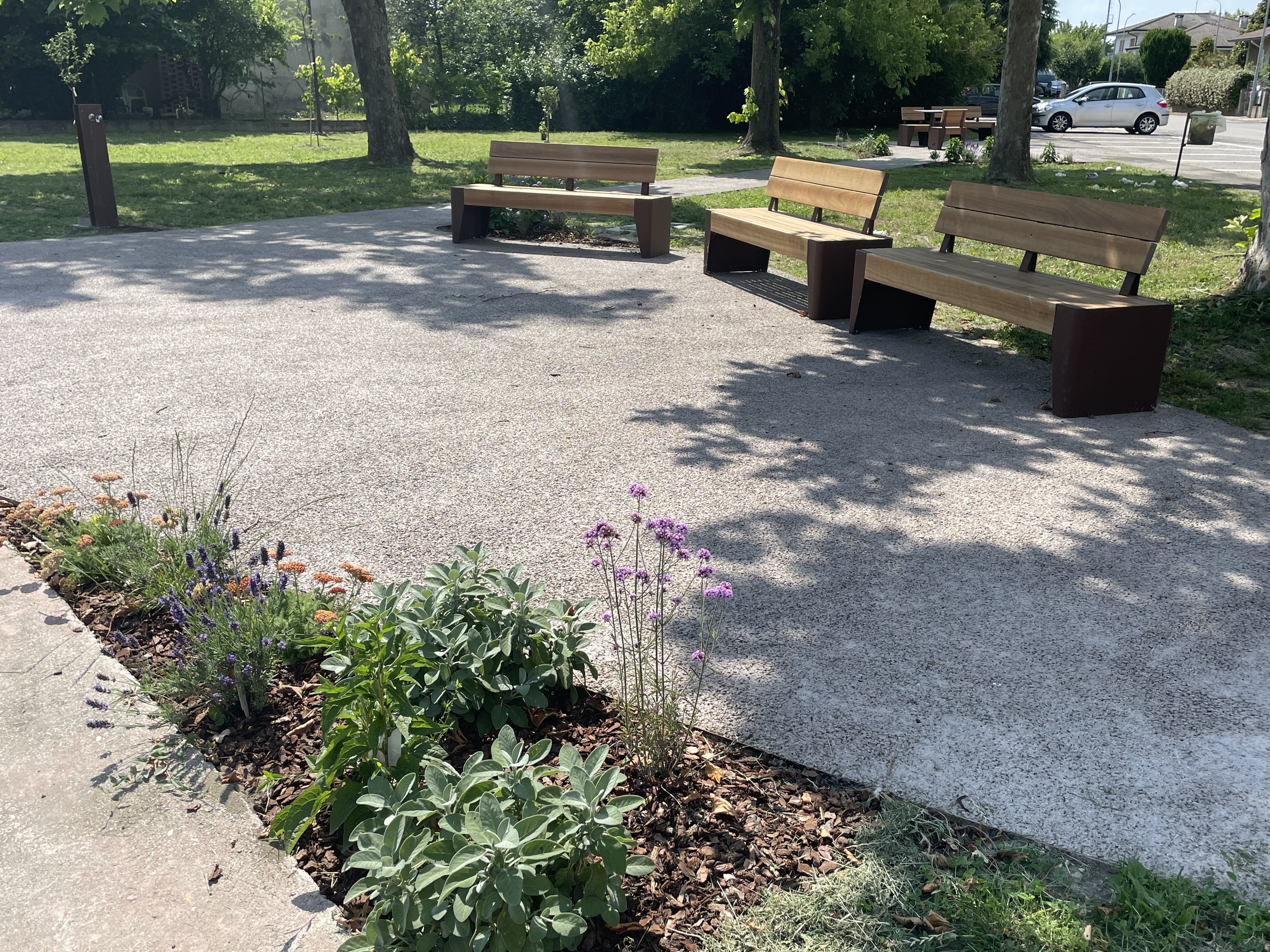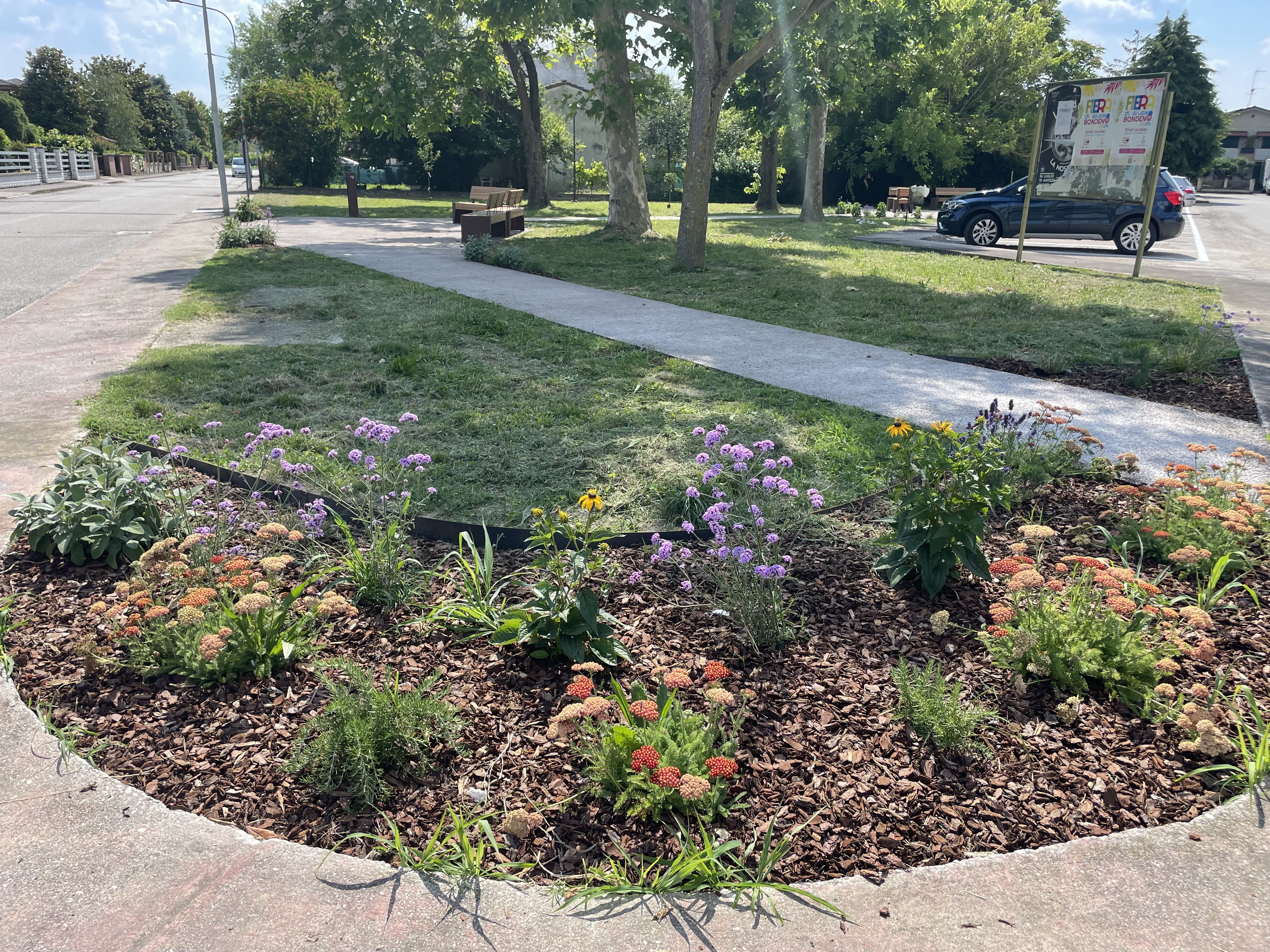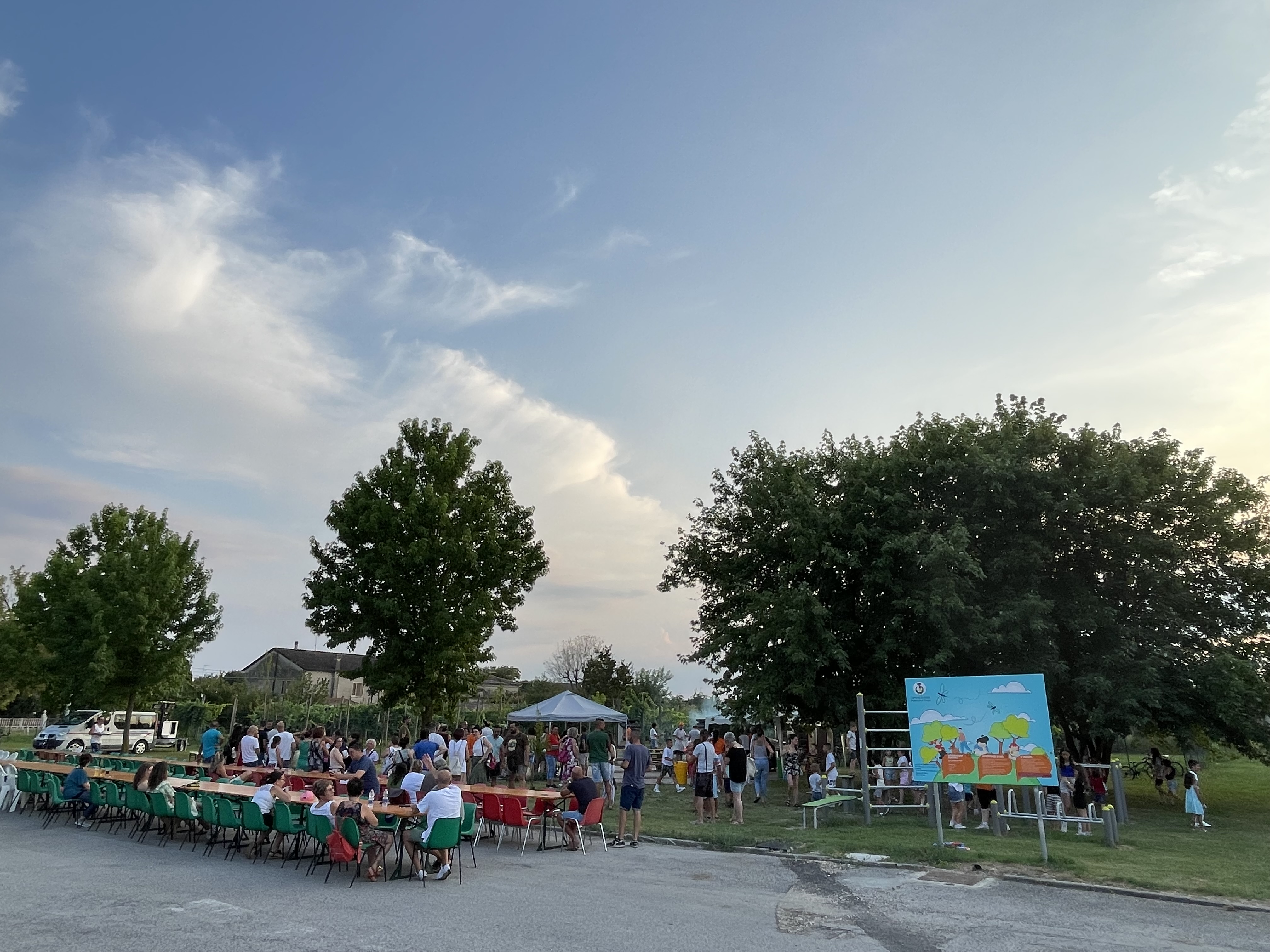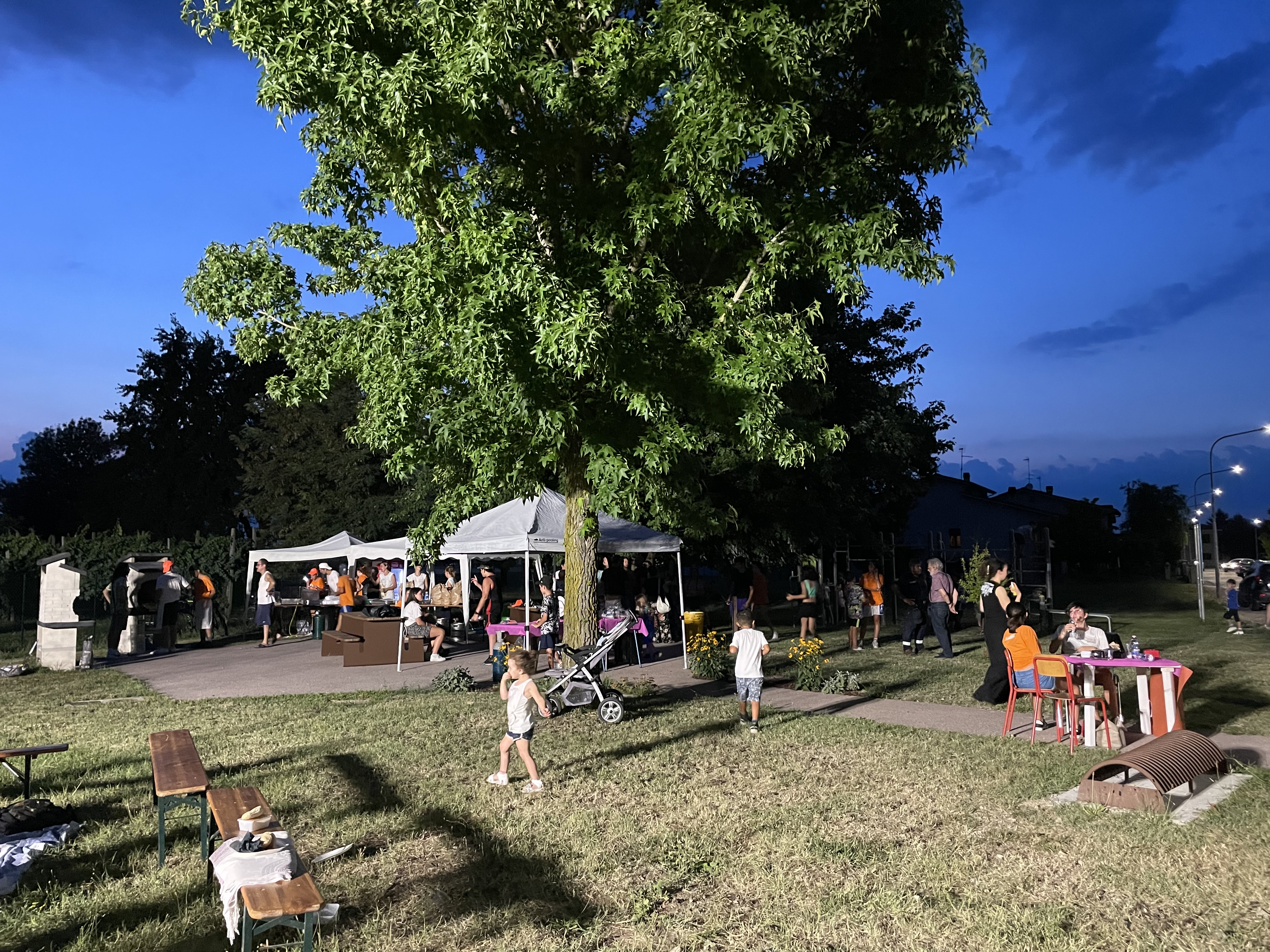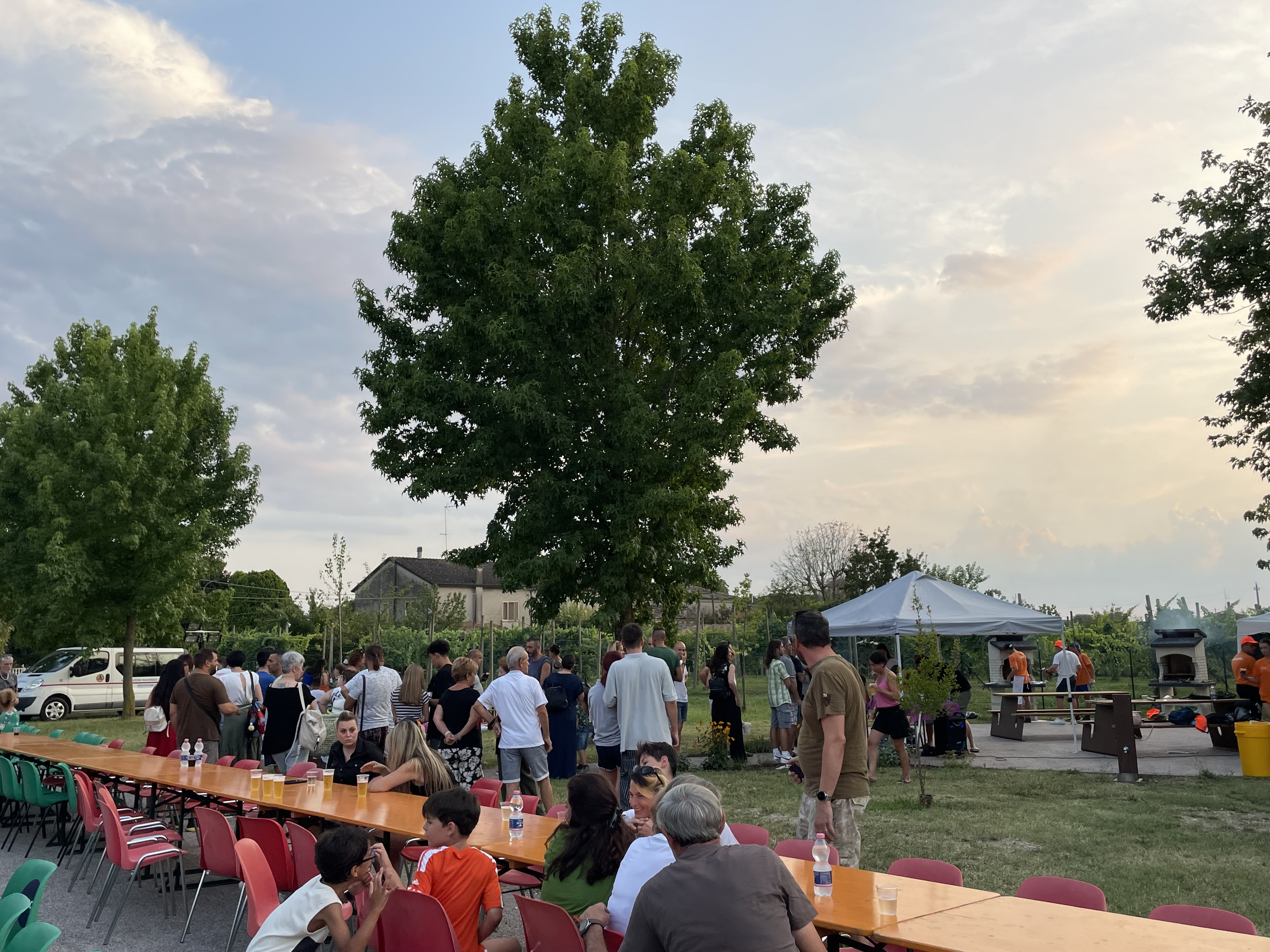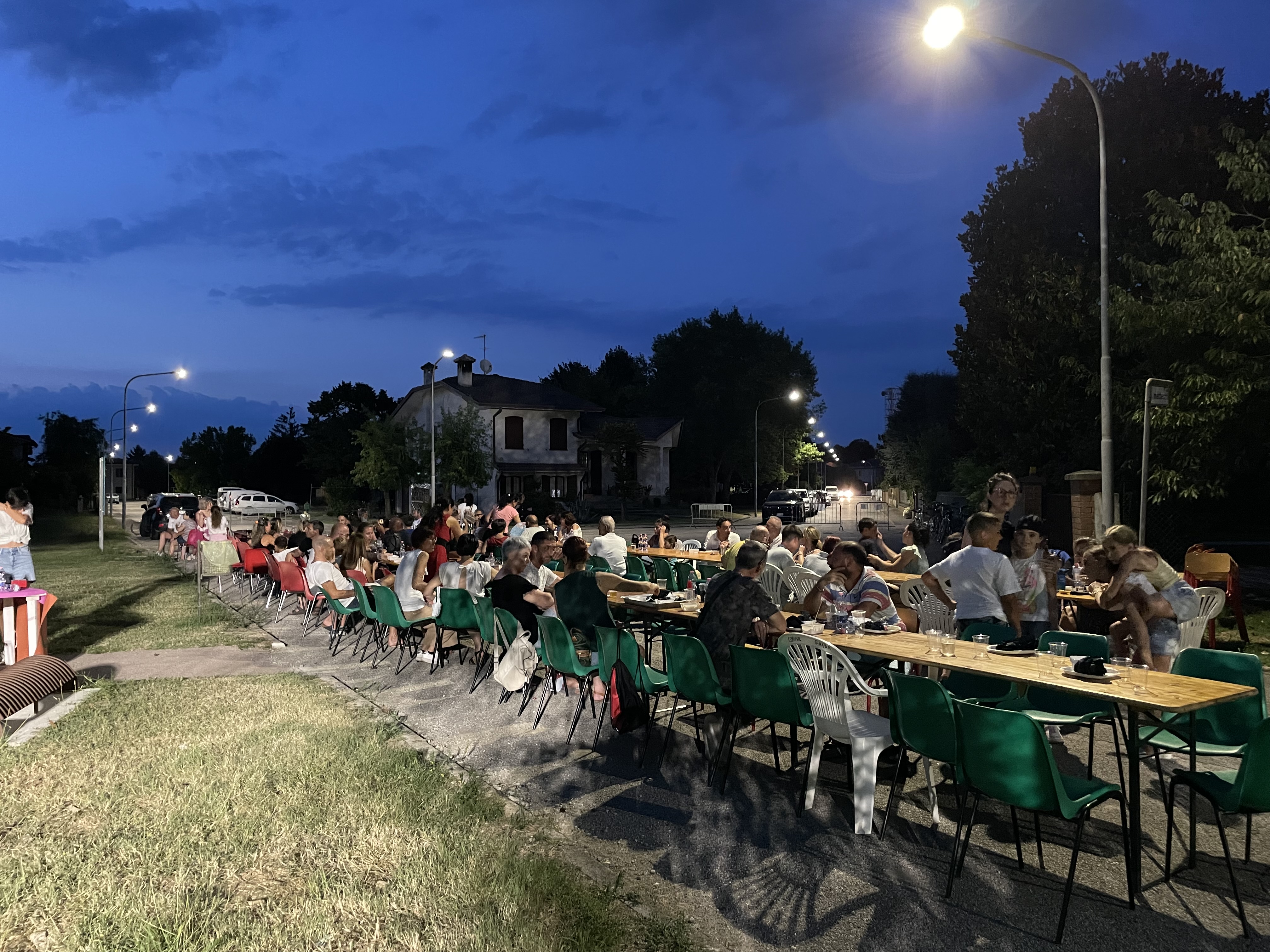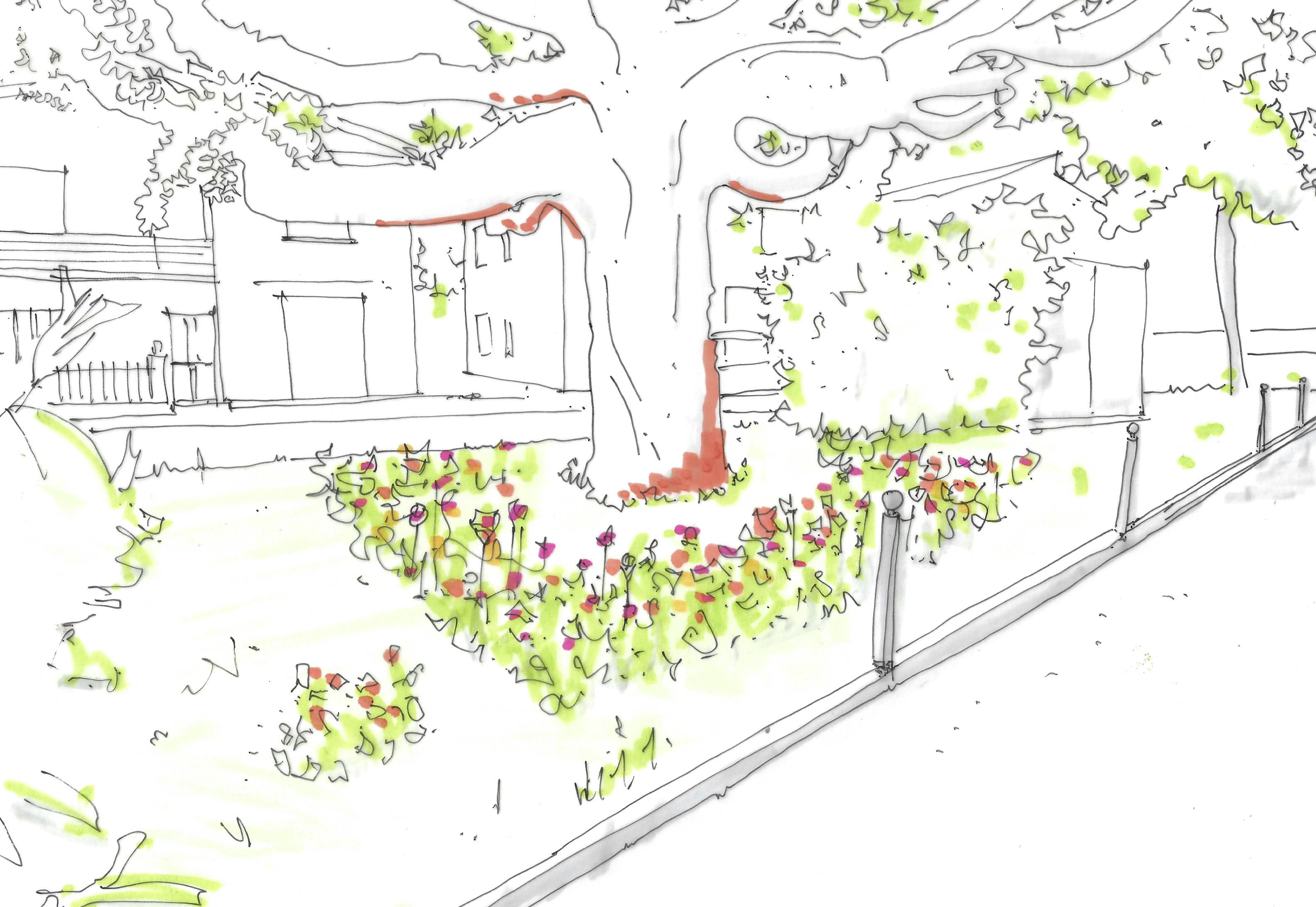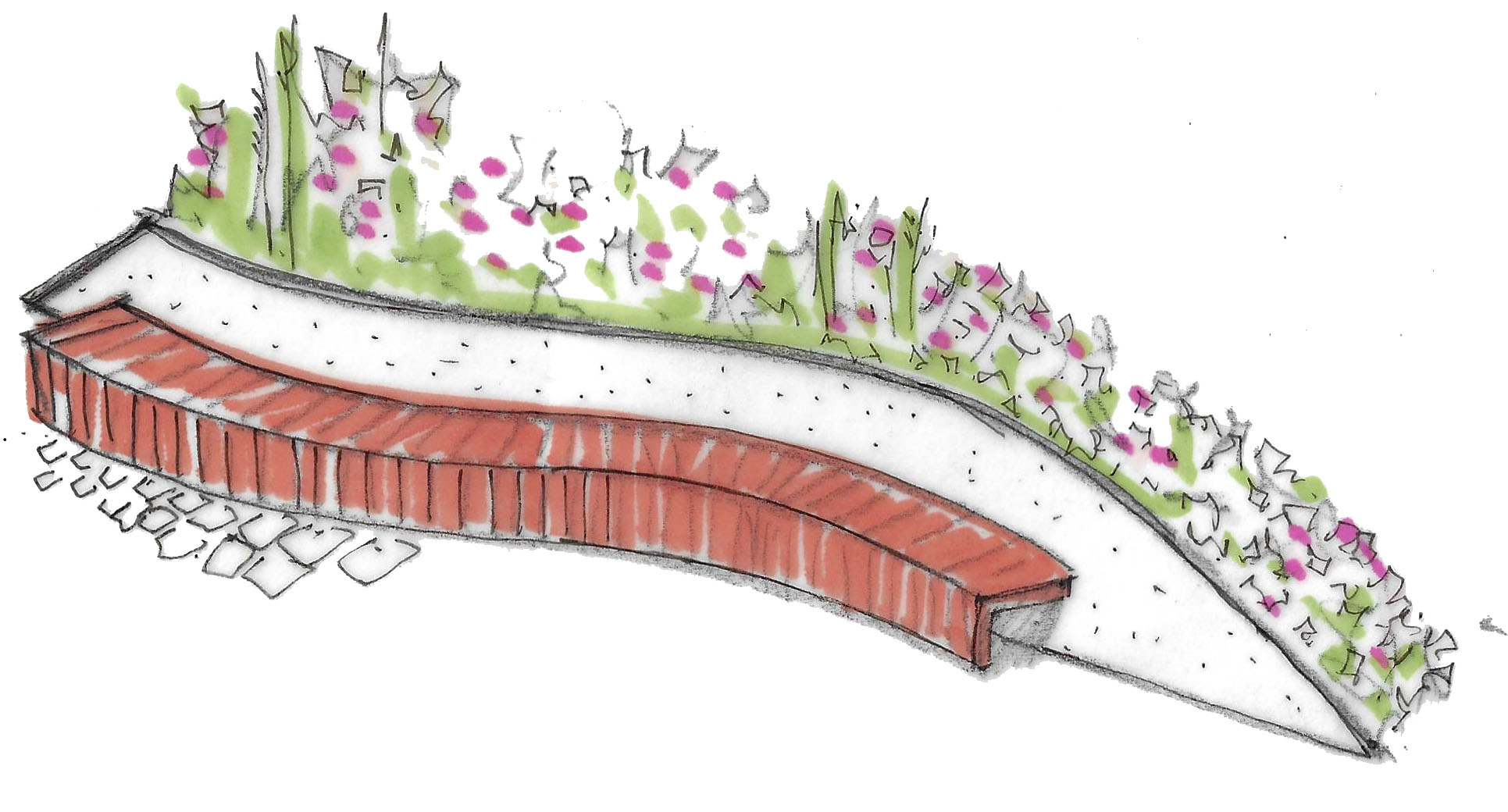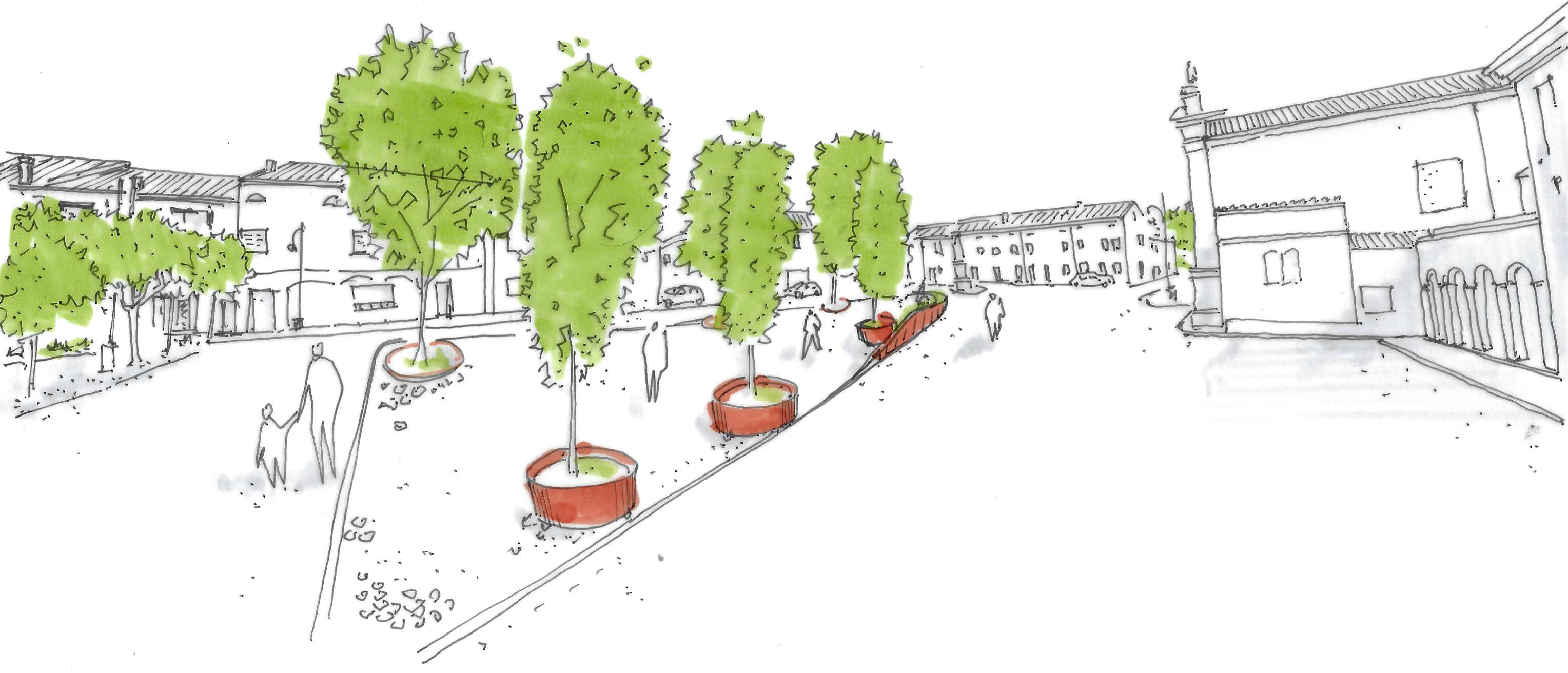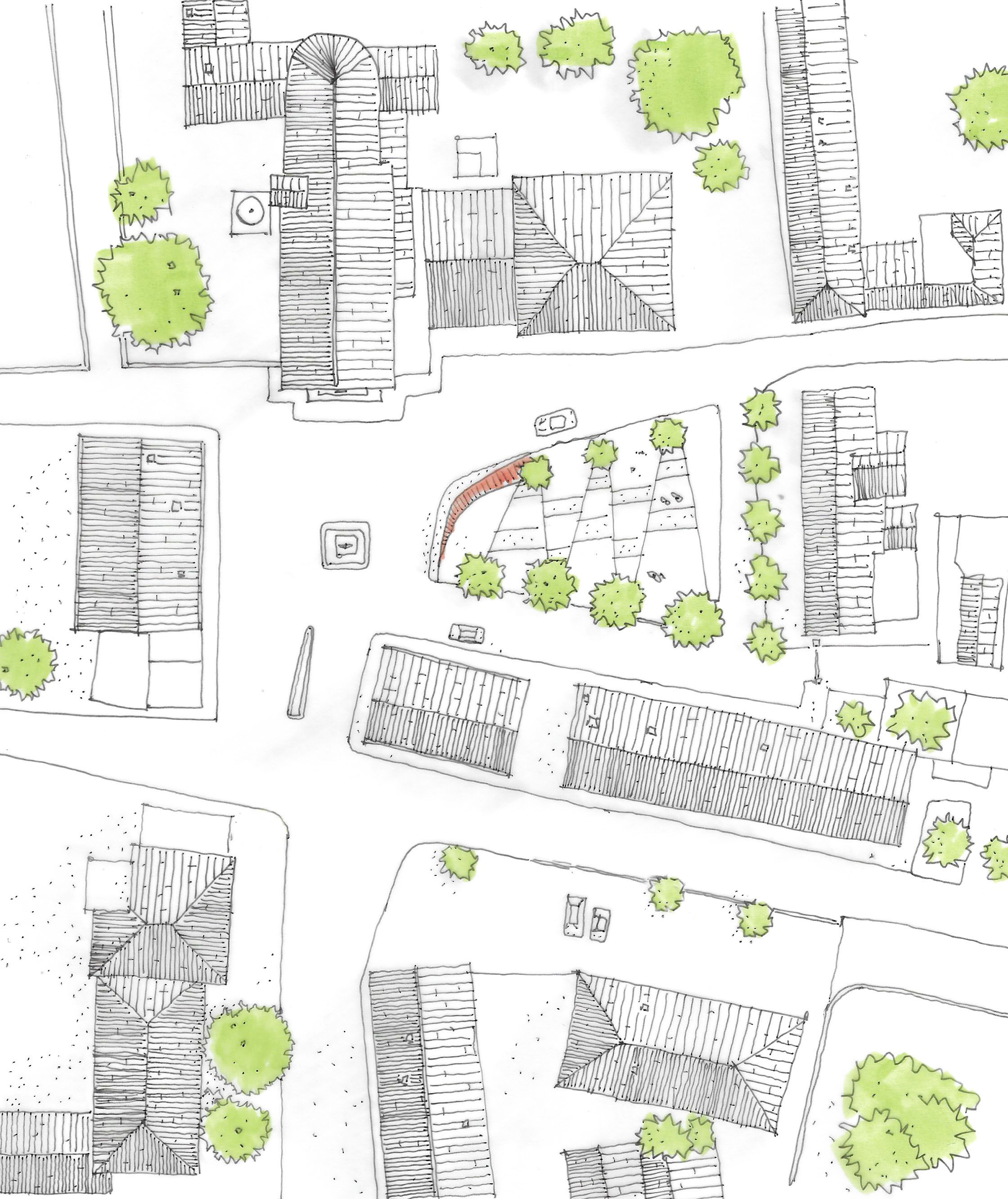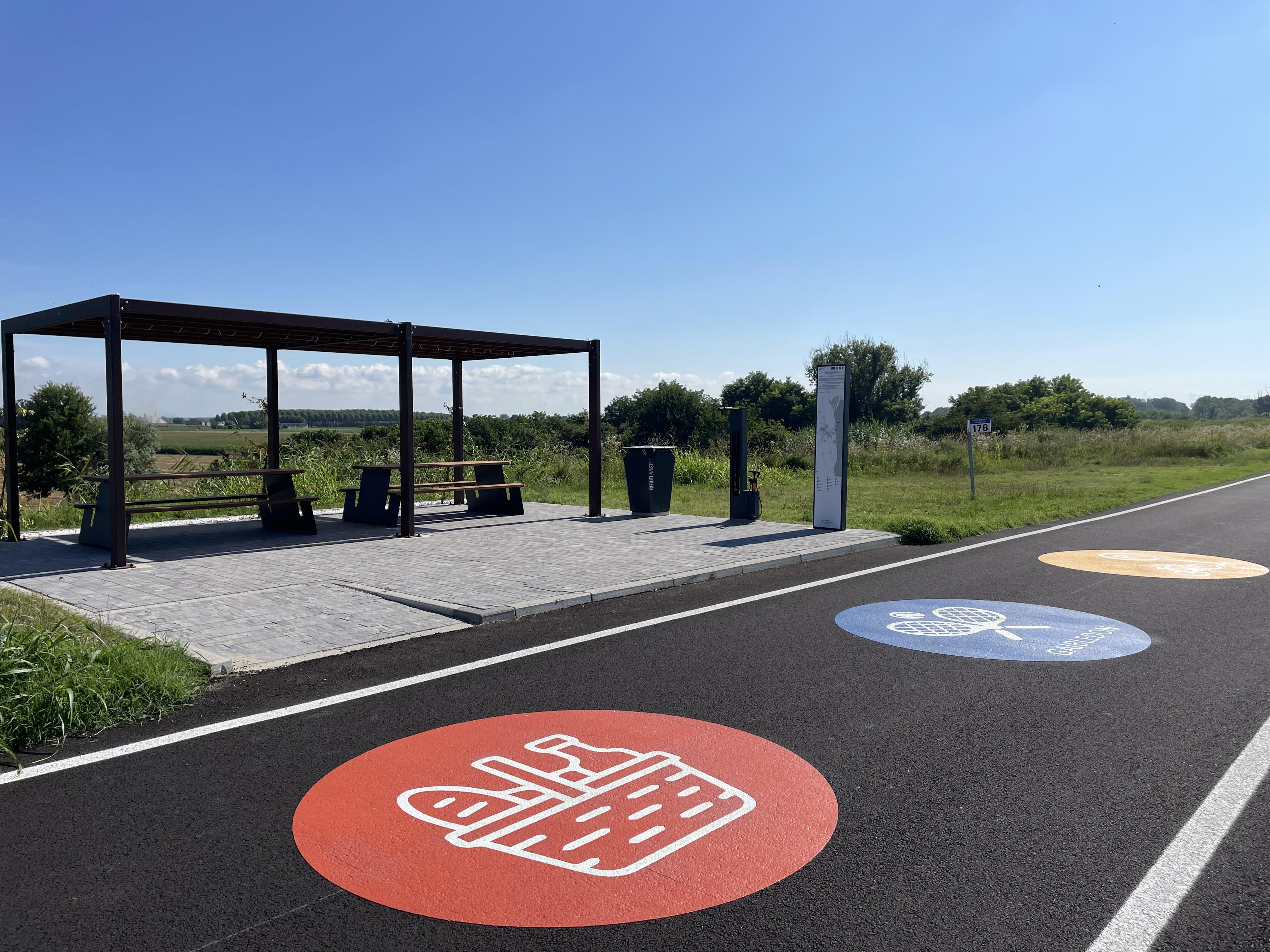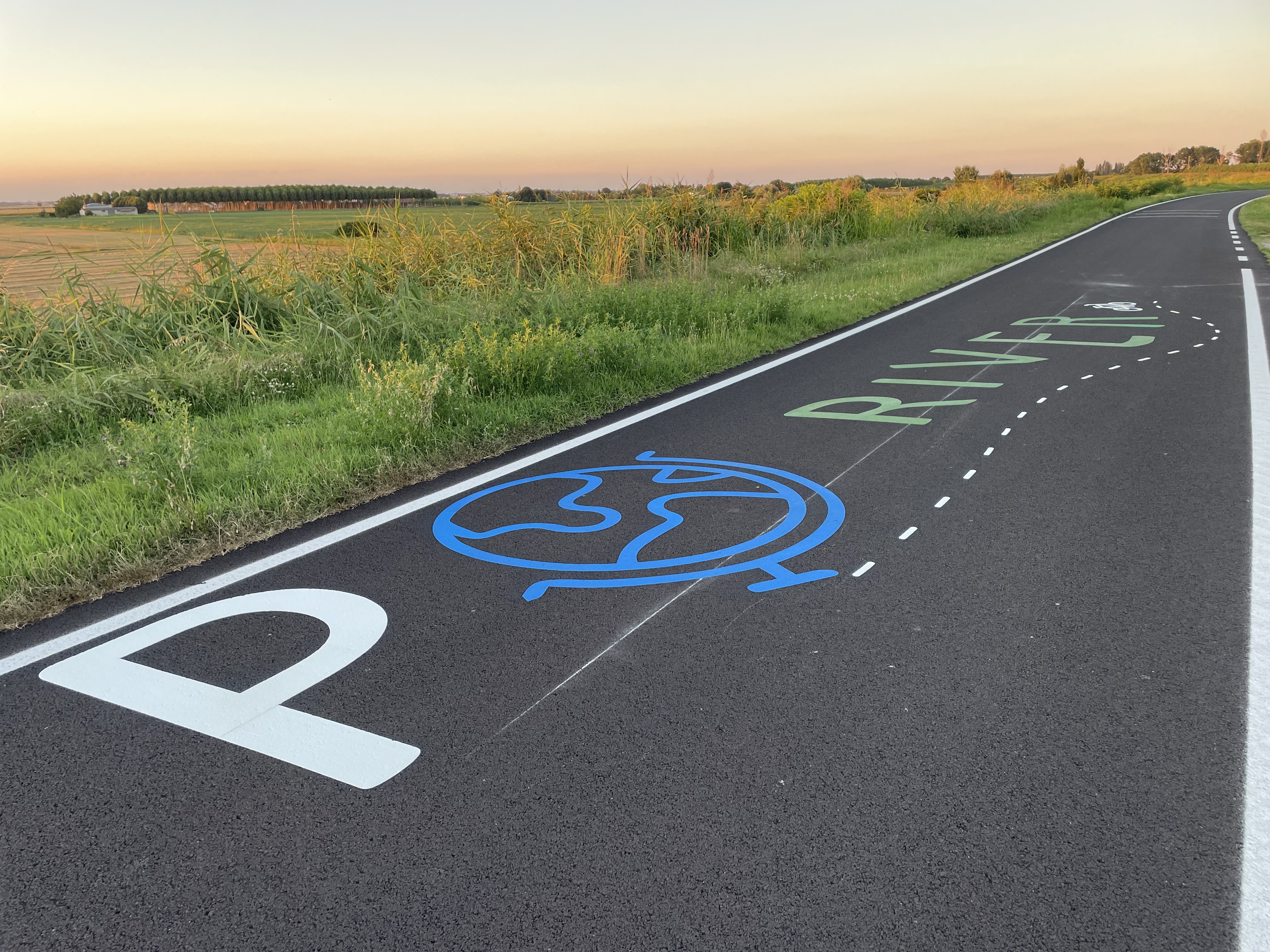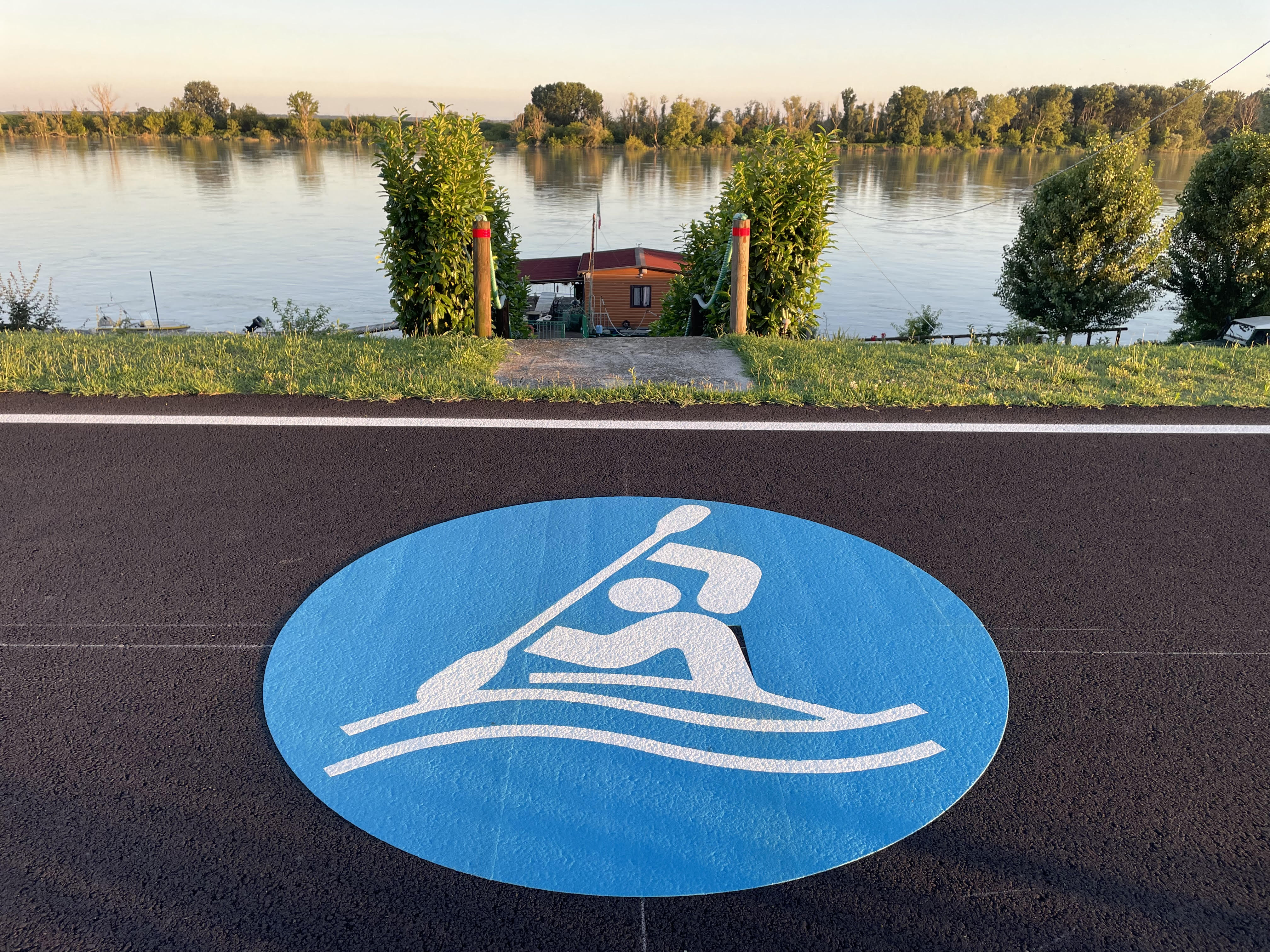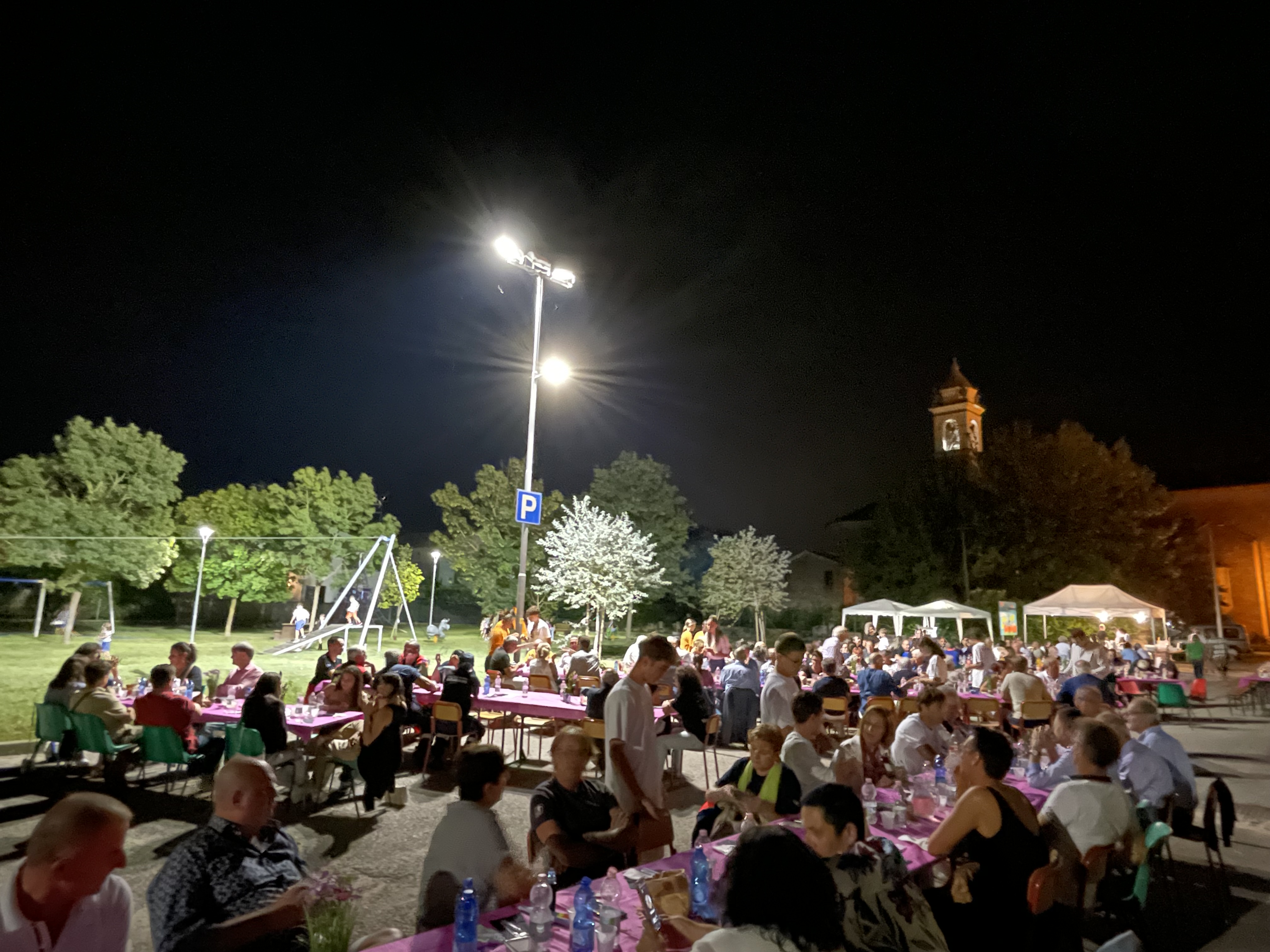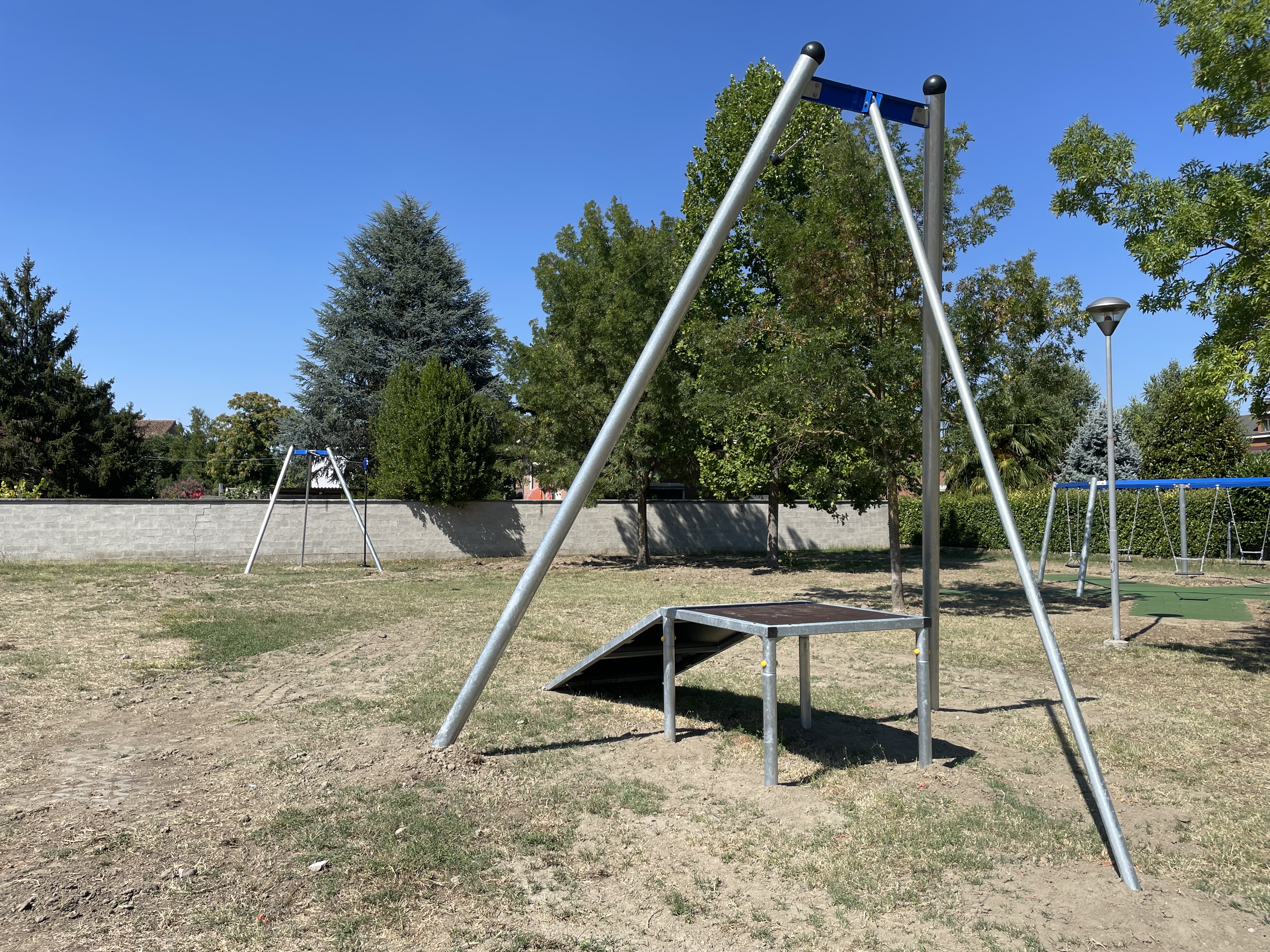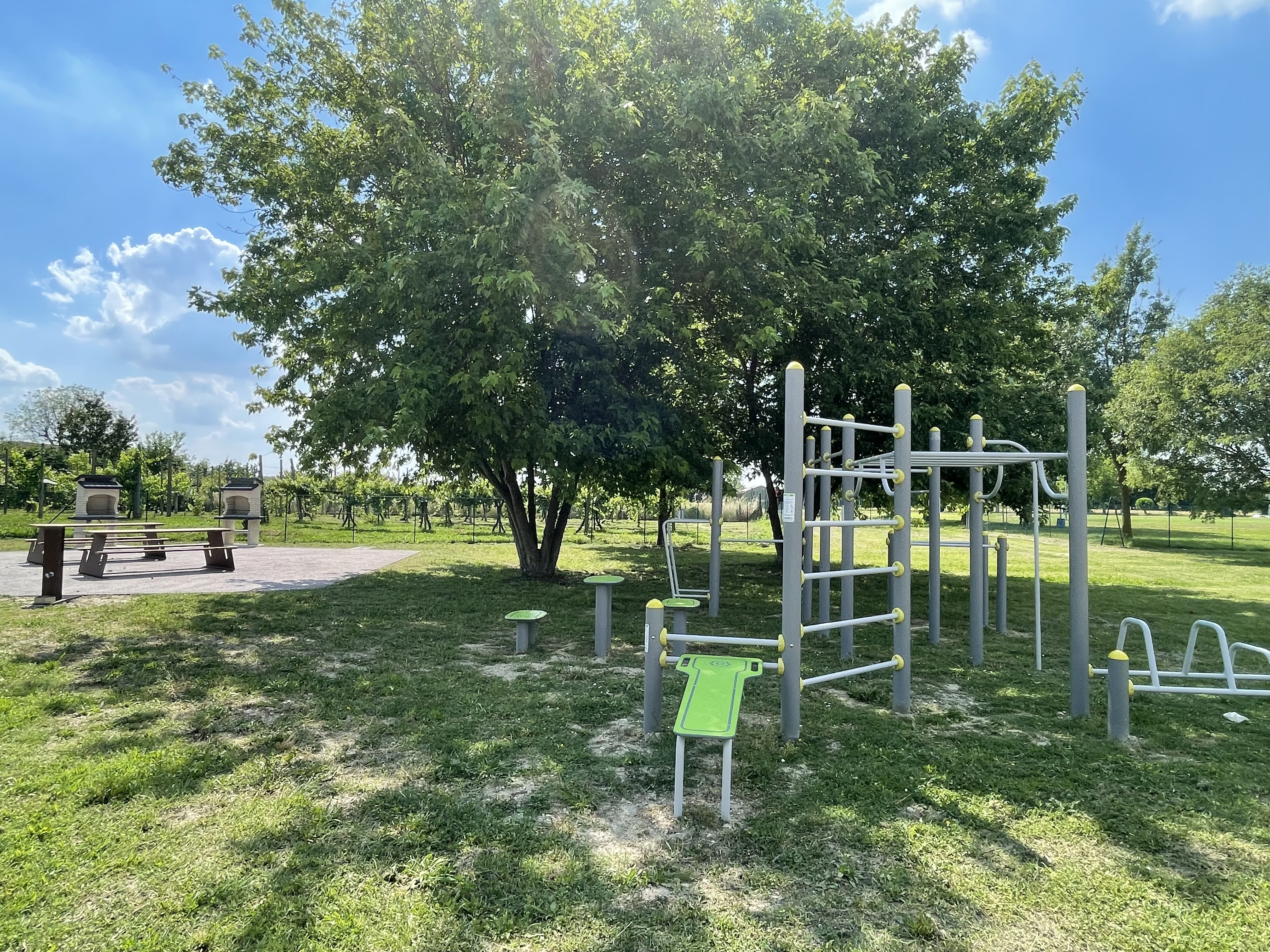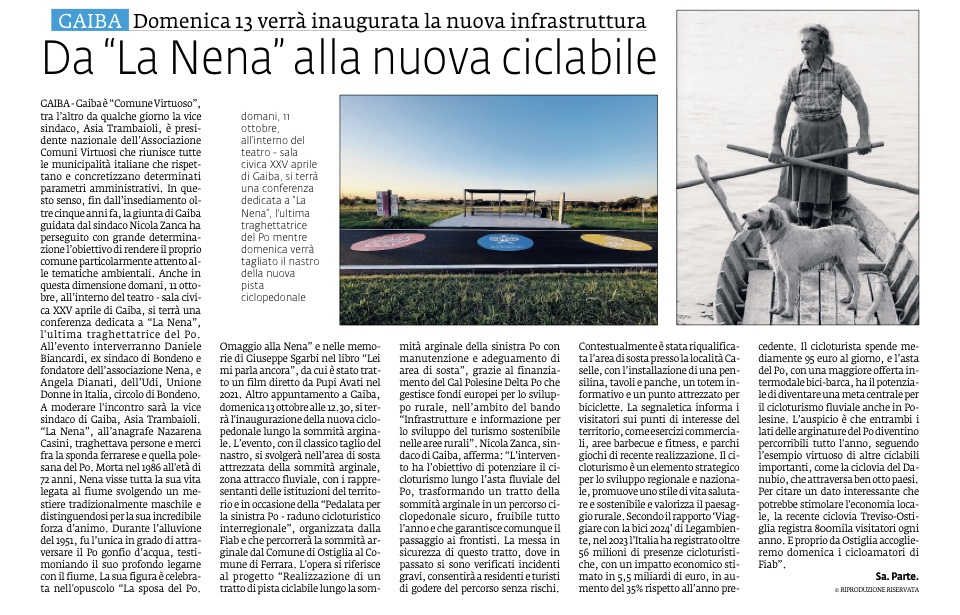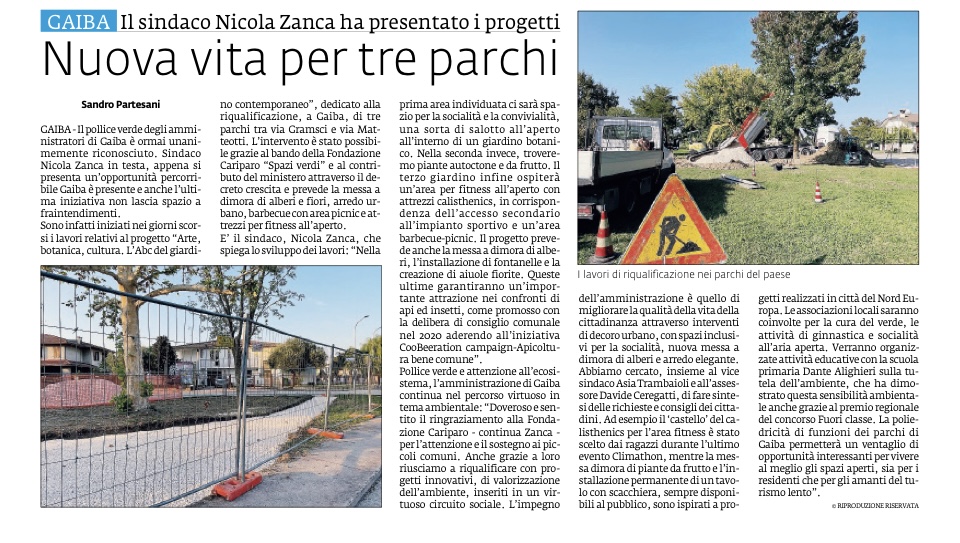GAIBADAPT
GAIBADAPT – Green Adaptation for Sustainable Urban Regeneration in Gaiba
GAIBADAPT is a transformative urban regeneration project in Gaiba, creating green, sustainable, and inclusive public spaces. Through tree planting, smart urban design, and community-led engagement, we’re revitalizing the town’s parks and river embankment. From a new cycling corridor to innovative public spaces and cultural events, GAIBADAPT aims to enhance quality of life, foster social connections, and promote environmental resilience for a brighter, greener future.
Italy
Via Gramsci, Via Matteotti, Piazza San Giuseppe, Via Roma, Via Fiaschi, Stradoncello Fiaschi, Ciclopedonale La Nena - Gaiba (RO)
Prototype level
Yes
Yes
Yes
No
No
029025: Gaiba (IT)
GAIBADAPT is an initiative of the Municipality of Gaiba dedicated to transforming its public spaces into more resilient, inclusive, and beautiful places, aligned with the New European Bauhaus values of sustainability, inclusion, and aesthetics. Targeting local residents of all ages—children, teenagers, seniors, and families—as well as visitors and local businesses, GAIBADAPT seeks to create greener, community-focused environments that foster social interaction, address climate challenges, and celebrate Gaiba’s cultural identity.
Through a participatory design process, citizens and stakeholders actively shape every project phase. Expert partners such as Università Iuav di Venezia provide guidance on nature-based solutions, ensuring the introduction of native and pollinator-friendly plant species, the use of permeable paving to reduce surface heat, and the planting of new trees for improved shading. These interventions help mitigate the urban heat-island effect, improve air quality, and boost biodiversity.
GAIBADAPT’s specific objectives include:
• Strengthening social cohesion by adding accessible seating and communal areas for events and gatherings.
• Preserving local heritage and identity by integrating landscape elements that reflect Gaiba’s unique cultural fabric.
• Enhancing climate resilience through targeted greening strategies—lowering summer temperatures and promoting environmental awareness—while regenerating Piazza San Giuseppe, Via Roma, and Via Fiaschi through new flowerbeds, additional trees, and improvements to surrounding areas.
Expected outcomes include a more vibrant and attractive town center with interconnected green corridors, livelier communal spaces, and a strong sense of local ownership—ensuring that GAIBADAPT becomes a model for sustainable urban regeneration in small municipalities.
Through a participatory design process, citizens and stakeholders actively shape every project phase. Expert partners such as Università Iuav di Venezia provide guidance on nature-based solutions, ensuring the introduction of native and pollinator-friendly plant species, the use of permeable paving to reduce surface heat, and the planting of new trees for improved shading. These interventions help mitigate the urban heat-island effect, improve air quality, and boost biodiversity.
GAIBADAPT’s specific objectives include:
• Strengthening social cohesion by adding accessible seating and communal areas for events and gatherings.
• Preserving local heritage and identity by integrating landscape elements that reflect Gaiba’s unique cultural fabric.
• Enhancing climate resilience through targeted greening strategies—lowering summer temperatures and promoting environmental awareness—while regenerating Piazza San Giuseppe, Via Roma, and Via Fiaschi through new flowerbeds, additional trees, and improvements to surrounding areas.
Expected outcomes include a more vibrant and attractive town center with interconnected green corridors, livelier communal spaces, and a strong sense of local ownership—ensuring that GAIBADAPT becomes a model for sustainable urban regeneration in small municipalities.
Sustainability
Inclusion
Adaptation
Community engagement
Regeneration
GAIBADAPT exemplifies sustainability—a core New European Bauhaus (NEB) value—by advancing holistic environmental resilience and resource efficiency throughout Gaiba’s public spaces. The project prioritizes nature-based solutions that reduce urban heat, filter pollutants, and bolster biodiversity. Native trees and permeable paving cool the streetscape, diminish stormwater runoff, and capture carbon, while diverse planting supports local ecosystems and pollinators. These interventions directly mitigate the urban heat island effect and contribute to a healthier, more vibrant community.
Equally central is GAIBADAPT’s participatory governance model, which ensures that citizens shape and maintain the spaces they inhabit. Co-design workshops, neighborhood forums, and hands-on planting days not only instill shared responsibility, but also nurture a dynamic feedback loop for continual improvement. This inclusive approach guarantees that sustainability is woven into Gaiba’s daily fabric—reflecting a genuinely bottom-up transformation rather than a top-down directive.
By weaving ecological restoration, climate adaptation, and community ownership into a single framework, GAIBADAPT establishes a concrete roadmap for small municipalities to follow. It proves that even modest centers can embrace ambitious sustainability targets—like lowering greenhouse gas emissions and safeguarding biodiversity—through pragmatic design choices, citizen leadership, and partnerships with entities like Università Iuav di Venezia. GAIBADAPT thus stands as a strong reference point within the NEB community, demonstrating that greener, healthier, and more equitable environments can be co-created at a local scale, inspiring other communities to replicate its successful blend of resource-saving measures and civic engagement.
Equally central is GAIBADAPT’s participatory governance model, which ensures that citizens shape and maintain the spaces they inhabit. Co-design workshops, neighborhood forums, and hands-on planting days not only instill shared responsibility, but also nurture a dynamic feedback loop for continual improvement. This inclusive approach guarantees that sustainability is woven into Gaiba’s daily fabric—reflecting a genuinely bottom-up transformation rather than a top-down directive.
By weaving ecological restoration, climate adaptation, and community ownership into a single framework, GAIBADAPT establishes a concrete roadmap for small municipalities to follow. It proves that even modest centers can embrace ambitious sustainability targets—like lowering greenhouse gas emissions and safeguarding biodiversity—through pragmatic design choices, citizen leadership, and partnerships with entities like Università Iuav di Venezia. GAIBADAPT thus stands as a strong reference point within the NEB community, demonstrating that greener, healthier, and more equitable environments can be co-created at a local scale, inspiring other communities to replicate its successful blend of resource-saving measures and civic engagement.
GAIBADAPT is designed not only to enhance environmental resilience but also to elevate the aesthetic quality and overall experience of Gaiba’s public spaces. Our key objectives in terms of aesthetics and quality of experience are to create visually engaging environments that evoke positive emotions and foster cultural enrichment.
To achieve these goals, we reimagined key urban areas—such as Piazza San Giuseppe and Piazza Marconi—by introducing a contemporary garden concept that blends natural elements with innovative design. Through the careful selection of native vegetation, organic, non-linear landscaping, and artistic installations, we have transformed these once underutilized spaces into vibrant hubs that inspire awe and encourage social interaction. High-quality materials, like natural stone and sustainable paving solutions, enhance the tactile and visual experience, while smart urban furniture and creative lighting add both functionality and a sense of warmth after dusk.
Beyond physical design, GAIBADAPT integrates cultural activities to enrich the public experience. Community events—including festive park evenings, barbecue gatherings, and art exhibitions—have turned these spaces into centers of local celebration and cultural expression. Initiatives like Gaibledon, which promotes grass tennis, and the VENETO OPEN tournament further contribute to a unique local identity, blending sport, art, and tradition to foster pride and community cohesion.
By merging thoughtful design with dynamic cultural programming, GAIBADAPT exemplifies how strategic aesthetic enhancements can improve both the quality of life and the sense of belonging among citizens. This initiative serves as a replicable model for small municipalities, demonstrating that integrating design, positive emotions, and cultural benefits into urban regeneration projects can drive lasting social and aesthetic transformation.
To achieve these goals, we reimagined key urban areas—such as Piazza San Giuseppe and Piazza Marconi—by introducing a contemporary garden concept that blends natural elements with innovative design. Through the careful selection of native vegetation, organic, non-linear landscaping, and artistic installations, we have transformed these once underutilized spaces into vibrant hubs that inspire awe and encourage social interaction. High-quality materials, like natural stone and sustainable paving solutions, enhance the tactile and visual experience, while smart urban furniture and creative lighting add both functionality and a sense of warmth after dusk.
Beyond physical design, GAIBADAPT integrates cultural activities to enrich the public experience. Community events—including festive park evenings, barbecue gatherings, and art exhibitions—have turned these spaces into centers of local celebration and cultural expression. Initiatives like Gaibledon, which promotes grass tennis, and the VENETO OPEN tournament further contribute to a unique local identity, blending sport, art, and tradition to foster pride and community cohesion.
By merging thoughtful design with dynamic cultural programming, GAIBADAPT exemplifies how strategic aesthetic enhancements can improve both the quality of life and the sense of belonging among citizens. This initiative serves as a replicable model for small municipalities, demonstrating that integrating design, positive emotions, and cultural benefits into urban regeneration projects can drive lasting social and aesthetic transformation.
GAIBADAPT is deeply committed to inclusion as a cornerstone of its urban regeneration strategy. The initiative focuses on creating accessible and affordable public spaces that adhere to “design for all” principles. Key objectives include ensuring that redesigned areas—such as Piazza San Giuseppe and Piazza Marconi—are universally accessible. This means integrating smooth, barrier-free pathways, seating, and amenities that cater to people of all ages and abilities, including individuals with disabilities. Every element, from sustainable paving to smart urban furniture, is selected to promote ease of use and comfort.
In addition to physical accessibility, GAIBADAPT employs an inclusive governance model by engaging a diverse array of local stakeholders through co-creation workshops, public consultations, and participatory events. This process ensures that every voice—from families and children to the elderly and marginalized groups—is heard and integrated into decision-making. For instance, the renewal of the playground on Via Stradoncello Fiaschi features innovative equipment chosen directly by local children, while community events like festive park evenings and barbecue gatherings foster a strong sense of belonging and social cohesion.
Furthermore, the initiative embraces new societal models by incorporating cultural and recreational activities, such as Gaibledon—a grass tennis project—and the VENETO OPEN tournament. These activities not only enrich the urban experience but also serve as platforms for collective engagement and civic pride. By combining universal design, affordable access, and participatory governance, GAIBADAPT sets an exemplary standard for inclusive urban transformation under the New European Bauhaus framework.
In addition to physical accessibility, GAIBADAPT employs an inclusive governance model by engaging a diverse array of local stakeholders through co-creation workshops, public consultations, and participatory events. This process ensures that every voice—from families and children to the elderly and marginalized groups—is heard and integrated into decision-making. For instance, the renewal of the playground on Via Stradoncello Fiaschi features innovative equipment chosen directly by local children, while community events like festive park evenings and barbecue gatherings foster a strong sense of belonging and social cohesion.
Furthermore, the initiative embraces new societal models by incorporating cultural and recreational activities, such as Gaibledon—a grass tennis project—and the VENETO OPEN tournament. These activities not only enrich the urban experience but also serve as platforms for collective engagement and civic pride. By combining universal design, affordable access, and participatory governance, GAIBADAPT sets an exemplary standard for inclusive urban transformation under the New European Bauhaus framework.
GAIBADAPT adopts a deeply participatory process that invites citizens of all backgrounds to shape the design and evolution of Gaiba’s public spaces. Starting with co-design workshops, residents—ranging from school children to senior groups—have contributed ideas on everything from playground equipment to the placement of trees and benches. This bottom-up engagement not only identifies the real needs of the community, but also fosters a sense of shared purpose and ownership: participants see their input translated into tangible, lasting improvements.
Multi-level engagement further amplifies impact. Alongside the municipality, local associations (e.g., sports clubs, cultural groups, environmental NGOs) help coordinate events, workshops, and maintenance activities. Stakeholders such as businesses and farmers are encouraged to offer feedback on relevant design features—ensuring that economic, cultural, and environmental perspectives all have a seat at the table. This builds a cohesive framework where municipal decisions are informed by direct input from multiple sectors of society.
Finally, a transdisciplinary approach underpins GAIBADAPT’s success, weaving together technical expertise from landscape architects and urban planners with local knowledge and on-the-ground collaboration. The municipality partners with academic institutions, such as the Università Iuav di Venezia, to blend rigorous research on climate adaptation and green infrastructure with intimate, citizen-driven insights. The result is a project that resonates with everyday residents, addresses climate challenges, and nurtures vibrant social connections—an exemplary model of how collective, inclusive efforts can transform small municipalities into sustainable and socially thriving communities.
Multi-level engagement further amplifies impact. Alongside the municipality, local associations (e.g., sports clubs, cultural groups, environmental NGOs) help coordinate events, workshops, and maintenance activities. Stakeholders such as businesses and farmers are encouraged to offer feedback on relevant design features—ensuring that economic, cultural, and environmental perspectives all have a seat at the table. This builds a cohesive framework where municipal decisions are informed by direct input from multiple sectors of society.
Finally, a transdisciplinary approach underpins GAIBADAPT’s success, weaving together technical expertise from landscape architects and urban planners with local knowledge and on-the-ground collaboration. The municipality partners with academic institutions, such as the Università Iuav di Venezia, to blend rigorous research on climate adaptation and green infrastructure with intimate, citizen-driven insights. The result is a project that resonates with everyday residents, addresses climate challenges, and nurtures vibrant social connections—an exemplary model of how collective, inclusive efforts can transform small municipalities into sustainable and socially thriving communities.
GAIBADAPT’s multi-level engagement ensures synergy among local, regional, national, and European stakeholders. At the local level, the Municipality of Gaiba oversees planning, funding, and day-to-day activities. Residents—especially youth—help shape public spaces through co-creation events like a climate hackathon, while civic associations and small businesses contribute to volunteer-driven programs. This approach fosters broad citizen ownership, with local needs and voices guiding every design choice.
Regionally, Fondazione Cariparo has granted EUR 100,000 for ecological revitalization aligned with sustainability guidelines. Partners such as Legambiente Veneto and local architects bring environmental expertise and social inclusion perspectives, refining GAIBADAPT’s solutions to reflect the region’s priorities.
Nationally, GAIBADAPT aligns with Italy’s framework for climate adaptation and urban renewal, using nature-based solutions to promote healthier lifestyles. Collaborations with NGOs and civic networks support volunteer-driven maintenance, while sharing best practices at national forums encourages replication of its inclusive model.
At the European level, Gaiba’s participation in climate hackathons (e.g., via Climate-KIC) and the New European Bauhaus fosters valuable exchanges. Partnerships with institutions like the Università Iuav di Venezia add scientific rigor, while the EU network amplifies GAIBADAPT’s impact—positioning Gaiba as a scalable success story for community-led sustainability.
Regionally, Fondazione Cariparo has granted EUR 100,000 for ecological revitalization aligned with sustainability guidelines. Partners such as Legambiente Veneto and local architects bring environmental expertise and social inclusion perspectives, refining GAIBADAPT’s solutions to reflect the region’s priorities.
Nationally, GAIBADAPT aligns with Italy’s framework for climate adaptation and urban renewal, using nature-based solutions to promote healthier lifestyles. Collaborations with NGOs and civic networks support volunteer-driven maintenance, while sharing best practices at national forums encourages replication of its inclusive model.
At the European level, Gaiba’s participation in climate hackathons (e.g., via Climate-KIC) and the New European Bauhaus fosters valuable exchanges. Partnerships with institutions like the Università Iuav di Venezia add scientific rigor, while the EU network amplifies GAIBADAPT’s impact—positioning Gaiba as a scalable success story for community-led sustainability.
GAIBADAPT weaves together multiple knowledge fields, ensuring a holistic approach to transforming Gaiba’s public spaces. Urban planning and landscape architecture guide the spatial design, integrating permeable surfaces, native planting, and climate-adaptive layouts. Environmental science underpins the green infrastructure choices, providing data on local biodiversity and natural resource management. Meanwhile, social sciences—including community engagement and participatory governance—shape co-design workshops and volunteer-driven maintenance plans.
The interaction among these disciplines occurs through regular design meetings, feedback loops, and public forums. Landscape architects coordinate with environmental scientists to evaluate soil, water, and biodiversity parameters, ensuring interventions remain both functional and ecologically sound. Social scientists and community facilitators then translate scientific insights into accessible, actionable guidelines for citizens and volunteers. This transdisciplinary collaboration fosters a shared language—where aesthetic goals, ecological performance, and community input converge into unified design decisions.
The added value is twofold. First, it produces designs that are simultaneously beautiful, inclusive, and scientifically grounded—making them more resilient over time. Second, it builds broader community trust and co-ownership. Citizens see expert knowledge integrated with their lived realities, motivating them to invest in the project’s success. Ultimately, GAIBADAPT serves as a practical model of how diverse disciplines can collaborate to create transformative public spaces that resonate with environmental priorities and human needs alike.
The interaction among these disciplines occurs through regular design meetings, feedback loops, and public forums. Landscape architects coordinate with environmental scientists to evaluate soil, water, and biodiversity parameters, ensuring interventions remain both functional and ecologically sound. Social scientists and community facilitators then translate scientific insights into accessible, actionable guidelines for citizens and volunteers. This transdisciplinary collaboration fosters a shared language—where aesthetic goals, ecological performance, and community input converge into unified design decisions.
The added value is twofold. First, it produces designs that are simultaneously beautiful, inclusive, and scientifically grounded—making them more resilient over time. Second, it builds broader community trust and co-ownership. Citizens see expert knowledge integrated with their lived realities, motivating them to invest in the project’s success. Ultimately, GAIBADAPT serves as a practical model of how diverse disciplines can collaborate to create transformative public spaces that resonate with environmental priorities and human needs alike.
GAIBADAPT distinguishes itself through an innovative, holistic strategy that integrates nature-based solutions, smart design elements, vibrant cultural programming, and public-private partnerships. Unlike standard urban greening projects, it emphasizes resilient, native plant species chosen for their capacity to absorb CO₂ and withstand local climate conditions—yielding cooler, healthier spaces while boosting biodiversity and air quality.
A key design highlight is the suspended drinking fountain, hung from above rather than installed at ground level, adding novelty and practicality. Multifunctional event areas—equipped for barbecues, neighborhood fairs, and volunteer-driven gatherings—further anchor community life. Private entities also sponsor and manage specific green plots, forging an active public-private collaboration that eases financial burdens and sparks local pride.
Central to GAIBADAPT’s success is its partnership with the Università Iuav di Venezia. Architects and sustainability experts from IUAV lead training and co-creation workshops, ensuring that design decisions match genuine community priorities. This participatory model extends to collaborative stewardship, involving both citizens and private partners in maintaining newly revitalized spaces.
By blending ecological resilience, forward-thinking design, inclusive engagement, and strategic private-sector alliances, GAIBADAPT stands as a replicable benchmark. Its commitment to suspended fountain concepts, climate-adapted planting, and multifunctional event areas—shaped through IUAV-led workshops and reinforced by partnerships with local businesses—demonstrates how even small municipalities can redefine sustainable urban transformation.
A key design highlight is the suspended drinking fountain, hung from above rather than installed at ground level, adding novelty and practicality. Multifunctional event areas—equipped for barbecues, neighborhood fairs, and volunteer-driven gatherings—further anchor community life. Private entities also sponsor and manage specific green plots, forging an active public-private collaboration that eases financial burdens and sparks local pride.
Central to GAIBADAPT’s success is its partnership with the Università Iuav di Venezia. Architects and sustainability experts from IUAV lead training and co-creation workshops, ensuring that design decisions match genuine community priorities. This participatory model extends to collaborative stewardship, involving both citizens and private partners in maintaining newly revitalized spaces.
By blending ecological resilience, forward-thinking design, inclusive engagement, and strategic private-sector alliances, GAIBADAPT stands as a replicable benchmark. Its commitment to suspended fountain concepts, climate-adapted planting, and multifunctional event areas—shaped through IUAV-led workshops and reinforced by partnerships with local businesses—demonstrates how even small municipalities can redefine sustainable urban transformation.
GAIBADAPT employs a comprehensive, nature-based methodology rooted in both scientific data and inclusive community engagement. First, local environmental assessments identify temperature peaks, stormwater patterns, and ecological gaps, informing the choice of resilient, CO₂-absorbing plant species adapted to Gaiba’s microclimate. This ensures that new greenery not only mitigates urban heat and purifies the air but also boosts local biodiversity.
Next, co-creation workshops—led by the Università Iuav di Venezia—bring together architects, environmental scientists, local businesses, and citizens to shape project priorities. During these sessions, participants discuss site layouts, innovative features such as suspended drinking fountains, and planned multifunctional areas for events or volunteer gatherings. This open dialogue ensures that design decisions reflect real-life needs and aspirations, while building community ownership.
In parallel, public-private partnerships lighten the financial load and cultivate broad ownership, with businesses adopting and caring for specific green areas. A participatory governance model underpins this approach: volunteer groups coordinate maintenance and small-scale improvements, engaging residents in long-term stewardship.
Finally, GAIBADAPT adopts an iterative, data-driven feedback loop. Soil quality, plant health, and community satisfaction are periodically monitored; findings guide course corrections or expansions of the project. This cyclical structure—assessing, co-creating, implementing, and refining—reinforces ecological resilience, inclusive design, and vibrant social life, demonstrating how even small municipalities can successfully implement sustainable, community-led urban regeneration.
Next, co-creation workshops—led by the Università Iuav di Venezia—bring together architects, environmental scientists, local businesses, and citizens to shape project priorities. During these sessions, participants discuss site layouts, innovative features such as suspended drinking fountains, and planned multifunctional areas for events or volunteer gatherings. This open dialogue ensures that design decisions reflect real-life needs and aspirations, while building community ownership.
In parallel, public-private partnerships lighten the financial load and cultivate broad ownership, with businesses adopting and caring for specific green areas. A participatory governance model underpins this approach: volunteer groups coordinate maintenance and small-scale improvements, engaging residents in long-term stewardship.
Finally, GAIBADAPT adopts an iterative, data-driven feedback loop. Soil quality, plant health, and community satisfaction are periodically monitored; findings guide course corrections or expansions of the project. This cyclical structure—assessing, co-creating, implementing, and refining—reinforces ecological resilience, inclusive design, and vibrant social life, demonstrating how even small municipalities can successfully implement sustainable, community-led urban regeneration.
Many facets of GAIBADAPT are easily transferable to other municipalities, regardless of size or context. First, the participatory design process, led by local experts and community members, demonstrates how inclusive co-creation can shape public spaces around actual user needs. This approach—featuring workshops, volunteer teams, and open-air consultations—can be replicated anywhere that civic engagement is a priority.
Second, the integration of nature-based solutions—from climate-resilient plant species to permeable paving—offers a scalable model for improved air quality, reduced heat island effects, and enhanced biodiversity. Municipalities can adapt GAIBADAPT’s plant selection process (focused on local climate and CO₂ absorption) and ecological design templates to fit their own environmental profiles.
Third, public-private partnerships can be recreated wherever there is a shared interest in cost-sharing and capacity-building. Businesses, NGOs, and local associations can sponsor green areas, provide maintenance, and organize events, reducing the burden on public budgets while fostering community pride.
Finally, the suspended drinking fountain concept, along with other innovative amenities (e.g., smart lighting and multifunctional event areas), demonstrates how thoughtful design can add both aesthetic value and practical benefits. The combination of new technology, eco-friendly materials, and cultural programming—guided by expert academic partners—serves as an adaptable, replicable formula for towns seeking to integrate sustainability, design excellence, and broad stakeholder involvement.
Second, the integration of nature-based solutions—from climate-resilient plant species to permeable paving—offers a scalable model for improved air quality, reduced heat island effects, and enhanced biodiversity. Municipalities can adapt GAIBADAPT’s plant selection process (focused on local climate and CO₂ absorption) and ecological design templates to fit their own environmental profiles.
Third, public-private partnerships can be recreated wherever there is a shared interest in cost-sharing and capacity-building. Businesses, NGOs, and local associations can sponsor green areas, provide maintenance, and organize events, reducing the burden on public budgets while fostering community pride.
Finally, the suspended drinking fountain concept, along with other innovative amenities (e.g., smart lighting and multifunctional event areas), demonstrates how thoughtful design can add both aesthetic value and practical benefits. The combination of new technology, eco-friendly materials, and cultural programming—guided by expert academic partners—serves as an adaptable, replicable formula for towns seeking to integrate sustainability, design excellence, and broad stakeholder involvement.
GAIBADAPT addresses a range of global issues—environmental sustainability, social inclusion, public health, and sustainable urban development—through localized, practical interventions. First, the project tackles climate change by adopting nature-based solutions: planting native, drought-resistant species that demand less water, boost biodiversity, and help mitigate urban heat. These ecological practices strengthen Gaiba’s resilience, demonstrating that even small communities can effectively counter global warming at a local scale.
Second, GAIBADAPT promotes social inclusion. In response to widespread urban inequalities, the project deliberately designs accessible spaces accommodating families, seniors, people with disabilities, and youth. By bringing together diverse groups through co-creation workshops, playgrounds, and gathering areas, GAIBADAPT fosters intergenerational interaction and reduces social fragmentation—a vital outcome for communities around the world.
In addition, the initiative addresses public health concerns tied to sedentary lifestyles. Outdoor fitness zones and spaces for relaxation encourage physical activity and time spent in nature, contributing to better mental and physical well-being. This locally grounded solution resonates with the global push for healthier living environments.
Finally, GAIBADAPT supports sustainable urban development by revitalizing neglected plots into multifunctional communal spaces. Rather than allowing underutilized areas to remain degraded, the project reshapes them to meet the evolving needs of residents—promoting more conscious, responsible use of public land. In doing so, GAIBADAPT serves as a replicable model for how small municipalities can effectively confront large-scale challenges through targeted, inclusive, and ecologically sound actions.
Second, GAIBADAPT promotes social inclusion. In response to widespread urban inequalities, the project deliberately designs accessible spaces accommodating families, seniors, people with disabilities, and youth. By bringing together diverse groups through co-creation workshops, playgrounds, and gathering areas, GAIBADAPT fosters intergenerational interaction and reduces social fragmentation—a vital outcome for communities around the world.
In addition, the initiative addresses public health concerns tied to sedentary lifestyles. Outdoor fitness zones and spaces for relaxation encourage physical activity and time spent in nature, contributing to better mental and physical well-being. This locally grounded solution resonates with the global push for healthier living environments.
Finally, GAIBADAPT supports sustainable urban development by revitalizing neglected plots into multifunctional communal spaces. Rather than allowing underutilized areas to remain degraded, the project reshapes them to meet the evolving needs of residents—promoting more conscious, responsible use of public land. In doing so, GAIBADAPT serves as a replicable model for how small municipalities can effectively confront large-scale challenges through targeted, inclusive, and ecologically sound actions.
GAIBADAPT has, from the outset, embraced the three New European Bauhaus (NEB) values—sustainability, inclusion, and aesthetics—via a strong participatory process. Stakeholder mapping, co-creation workshops, and open-air events have already engaged residents in reimagining public spaces. Activities such as festive evenings in parks, communal barbecues, and “Gaibledon”—grass tennis tournaments— and the VENETO OPEN, WTA tounament, have woven local culture into the revitalization, while volunteer-driven efforts to maintain flowerbeds and newly planted trees solidify citizen ownership.
Building on these foundations, the next phase of GAIBADAPT will focus on expanding co-design activities in collaboration with the Università Iuav di Venezia. Planned enhancements include additional tree planting, the installation of rain gardens and bioswales to optimize water management, and smart urban furniture—such as benches equipped with LED lighting and USB charging. Piazza San Giuseppe and Piazza Marconi are earmarked for these updates, transforming them into welcoming, energy-efficient community hubs.
Furthermore, efforts to regenerate the Po River embankment will continue, featuring an extended cycling path with a dedicated bike station offering shelter, repair services, and seating. Environmental monitoring will remain a priority, assessing reductions in urban heat and improvements in air quality to ensure ongoing effectiveness. Throughout these steps, NEB working principles will guide every decision. Residents will be actively involved in workshops, consultations, and participatory design sessions, ensuring that GAIBADAPT remains an inclusive, ecologically sound model of urban regeneration—one that demonstrates how beauty, accessibility, and sustainability can thrive in tandem.
Building on these foundations, the next phase of GAIBADAPT will focus on expanding co-design activities in collaboration with the Università Iuav di Venezia. Planned enhancements include additional tree planting, the installation of rain gardens and bioswales to optimize water management, and smart urban furniture—such as benches equipped with LED lighting and USB charging. Piazza San Giuseppe and Piazza Marconi are earmarked for these updates, transforming them into welcoming, energy-efficient community hubs.
Furthermore, efforts to regenerate the Po River embankment will continue, featuring an extended cycling path with a dedicated bike station offering shelter, repair services, and seating. Environmental monitoring will remain a priority, assessing reductions in urban heat and improvements in air quality to ensure ongoing effectiveness. Throughout these steps, NEB working principles will guide every decision. Residents will be actively involved in workshops, consultations, and participatory design sessions, ensuring that GAIBADAPT remains an inclusive, ecologically sound model of urban regeneration—one that demonstrates how beauty, accessibility, and sustainability can thrive in tandem.

